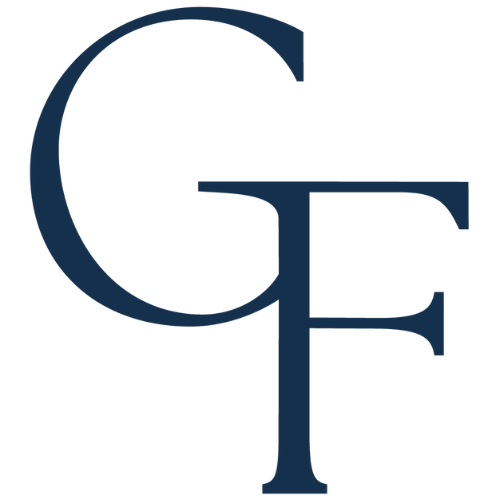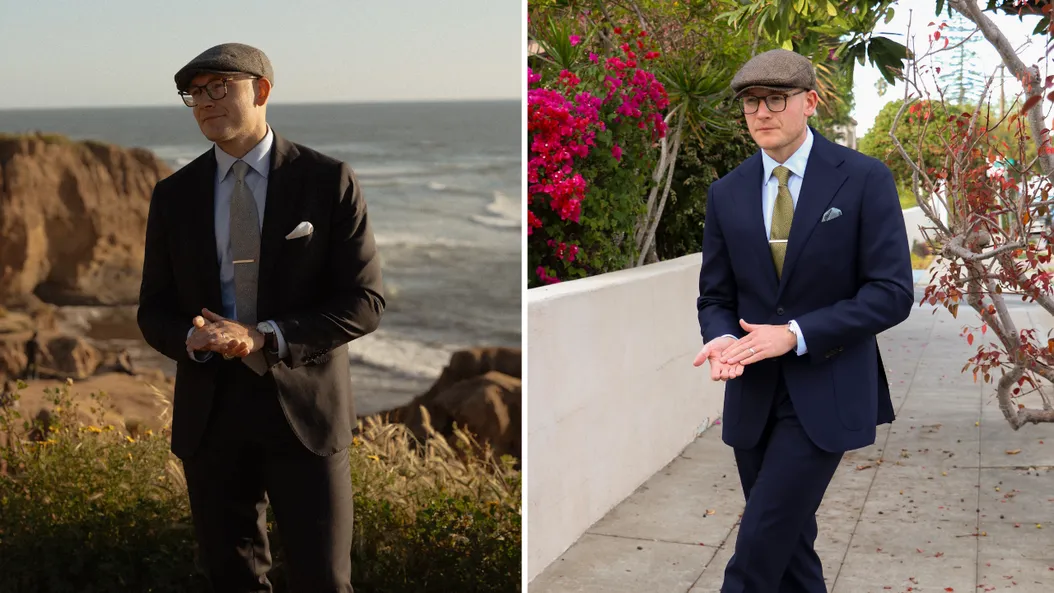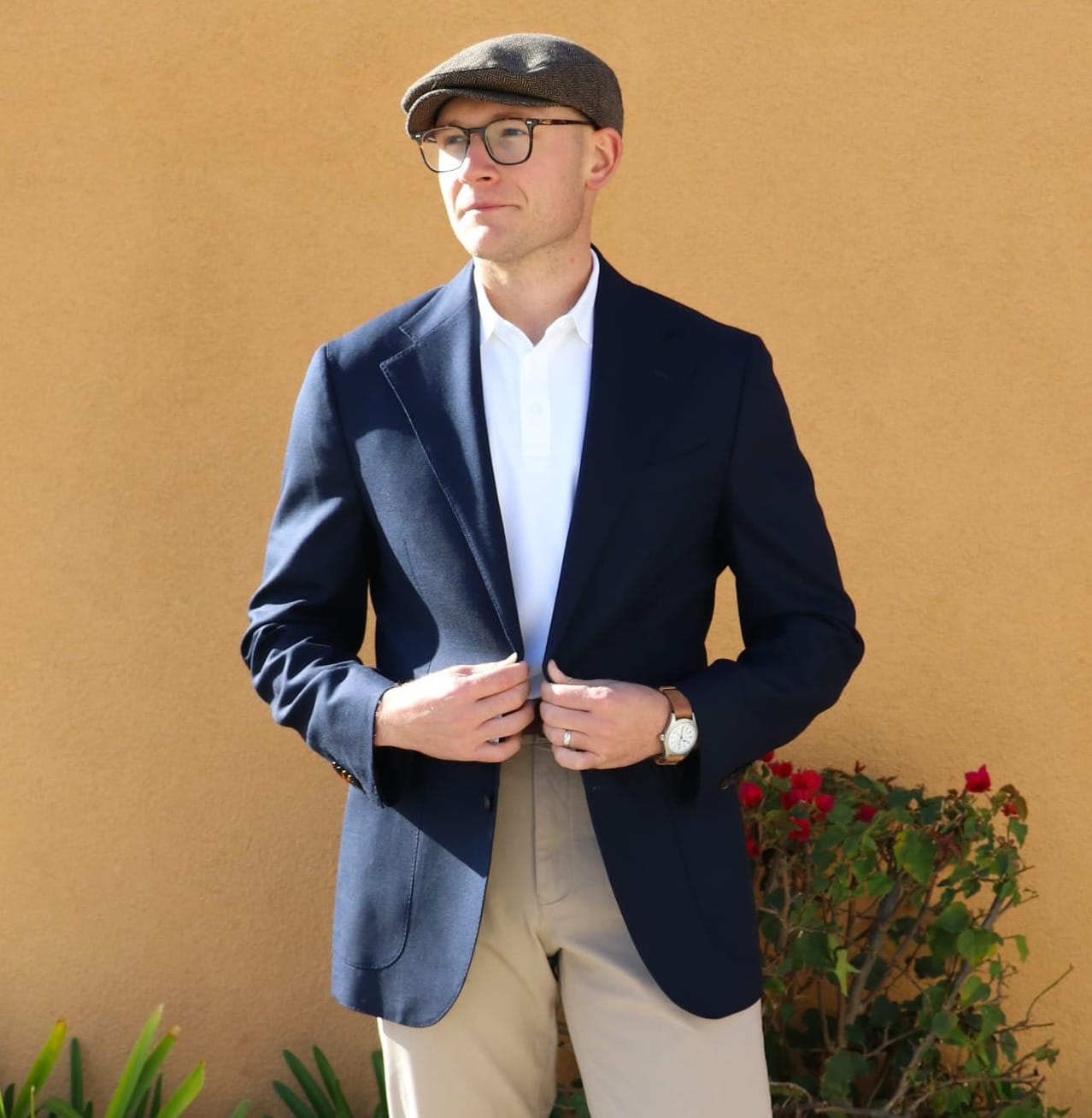
The business casual dress code for men seems to be ever-evolving. From blazers and sport coats with dress shoes to polo shirts, chinos, and white sneakers, it has grown to include more options for office wear.
I'll also provide ten examples, ranging from casual to formal, as this dress code often covers many options.
The 30,000-Foot View
Numerous stylists, classic menswear enthusiasts, and internet personalities often propose their own "rules" for business casual dress codes.
I won't say that the other definitions are correct or incorrect. Still, given the fluid landscape of business casual dress codes in the modern workplace, this article will serve as a no-nonsense, all-inclusive guide to looking professional while appropriately maintaining your workplace dress code.
The higher-ups at your job will set the specific dress code standards for their workplace culture, and how they define business casual is more important than following hard and fast rules that some guy or gal on the internet claims to be "proper."
Where Did "Business Casual" Come From?
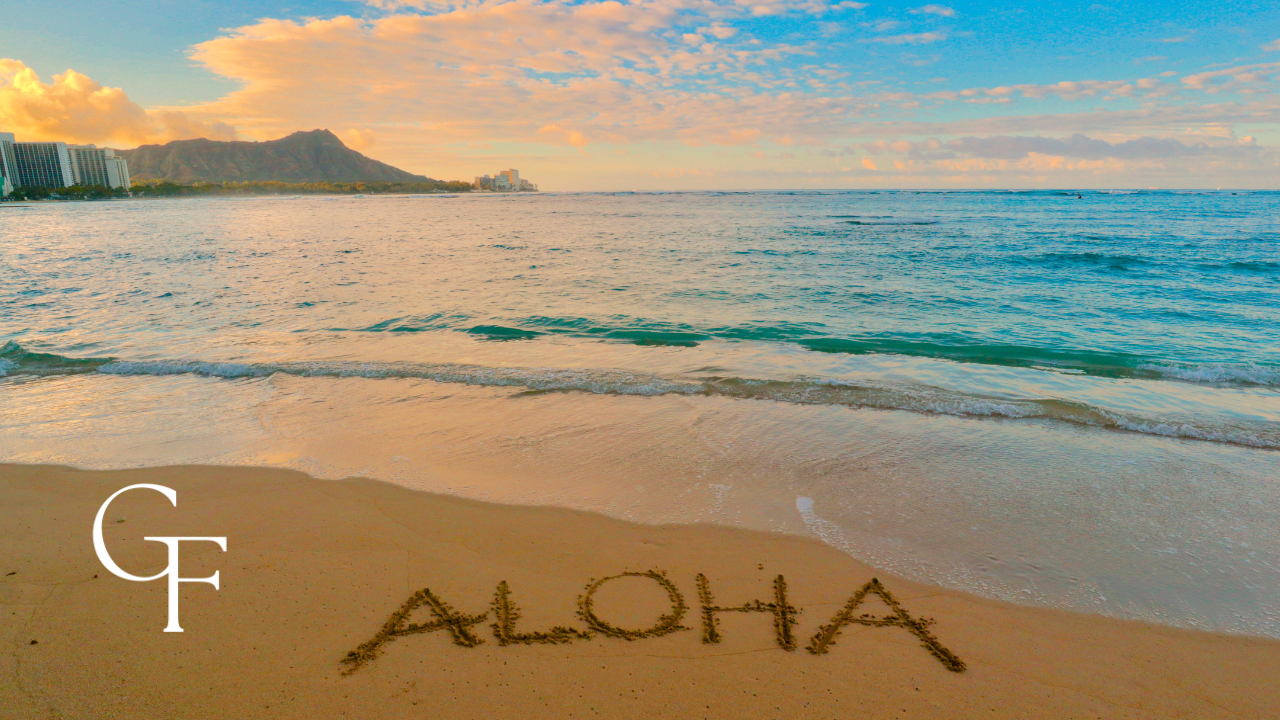
To understand the business casual dress code for men, we have to go back to the early 1960s. The Hawaiian Fashion Guild led a campaign known as Operation Liberation, which was meant to "free" local employees from modern business and office wear chains. Until this point, all men who worked in business wore traditional suits and ties.
This initiative allowed men to rebel against the strict corporate dress codes that had remained in effect for decades by allowing them to sport Hawaiian floral shirts to work on Fridays.
This official tradition didn't start until 1966 when Wilson Cannon Jr., president of the Bank of Hawaii, started wearing an aloha shirt every Friday to work. Thus, "Aloha Fridays" was born.
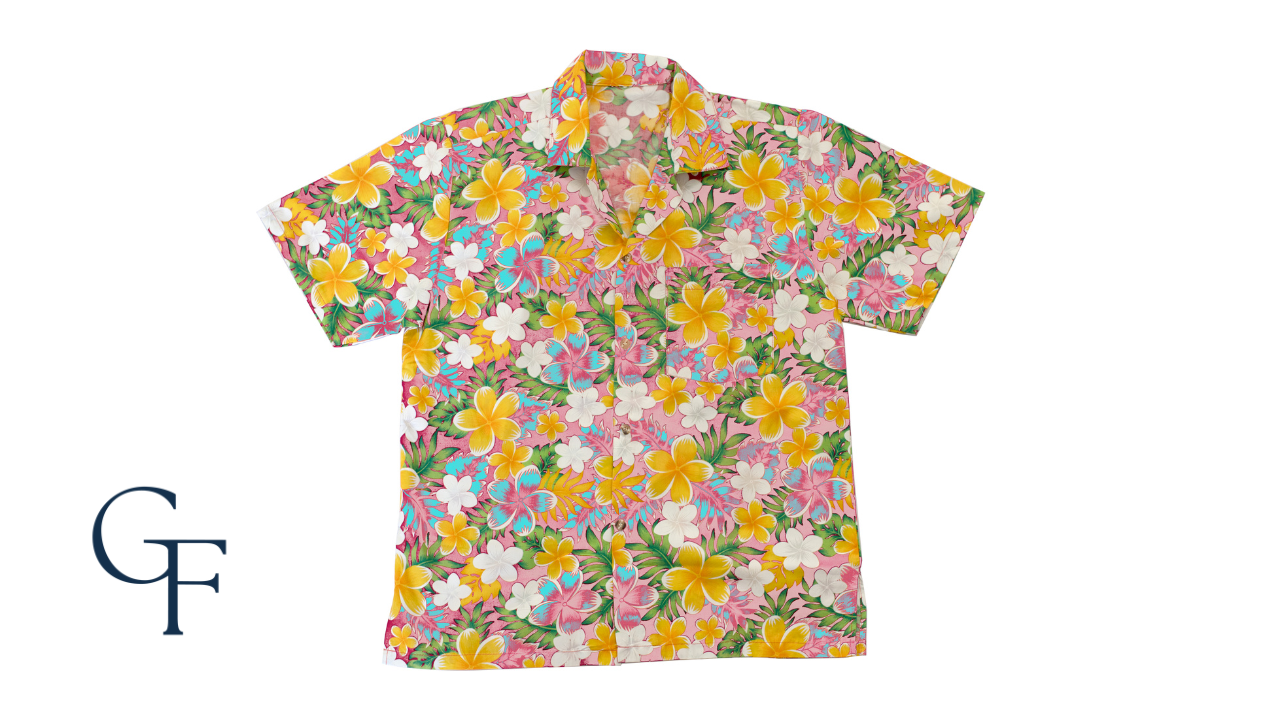
This Hawaiian trend became extremely popular and began to spread to the mainland, California, and beyond. It catalyzed the acceptance of more casual menswear in the business and office environment, eventually leading to what we now know as "Casual Fridays."
Brands such as Levi's began heavily marketing their Dockers chino pants. Soon enough, khaki chinos and blazers became prevalent in the workplace and were quickly embraced by men as an alternative to classic suit-and-tie uniforms.
Movies and television shows began to showcase more preppy variations of style, which no doubt contributed to the popularity of more casual business wear.
Heritage menswear brands such as Brooks Brothers and Polo Ralph Lauren began capitalizing on the growing trends, heavily marketing their polo shirts and chinos as acceptable options for the newly dubbed "business casual" dress code.
Business casual was now here to stay and was full speed ahead through the 1990s and beyond. Since then, the dress code has adapted to what we now know:
The Business Casual Dress Code Demystified
Business casual is a style that balances formal office wear with relaxed attire, aiming for a professional yet approachable look. For men, business casual attire should generally fall between a full-on suit and weekend casual attire.
You might often hear about dress codes that are business casual-adjacent, such as "smart casual" or "sharp casual." These usually fall squarely in the same category as contemporary business casual outfits, and everything I will cover throughout this guide will undoubtedly encompass the smart and sharp casual dress code while remaining quintessentially business casual.
To get started, here are a few guidelines that I recommend following right off the bat:
- No suits.
- No light-wash jeans.
- No medium-wash jeans.
- No athletic shoes.
- No work boots.
- No shorts of any kind.
Depending on who you are, these guidelines may sound a bit "old-fashioned." However, they are a surefire way to ensure that you are well-prepared for your place of work or a networking function.
Proper Business Casual Attire: A Breakdown of the Essentials
BUSINESS CASUAL SHOES
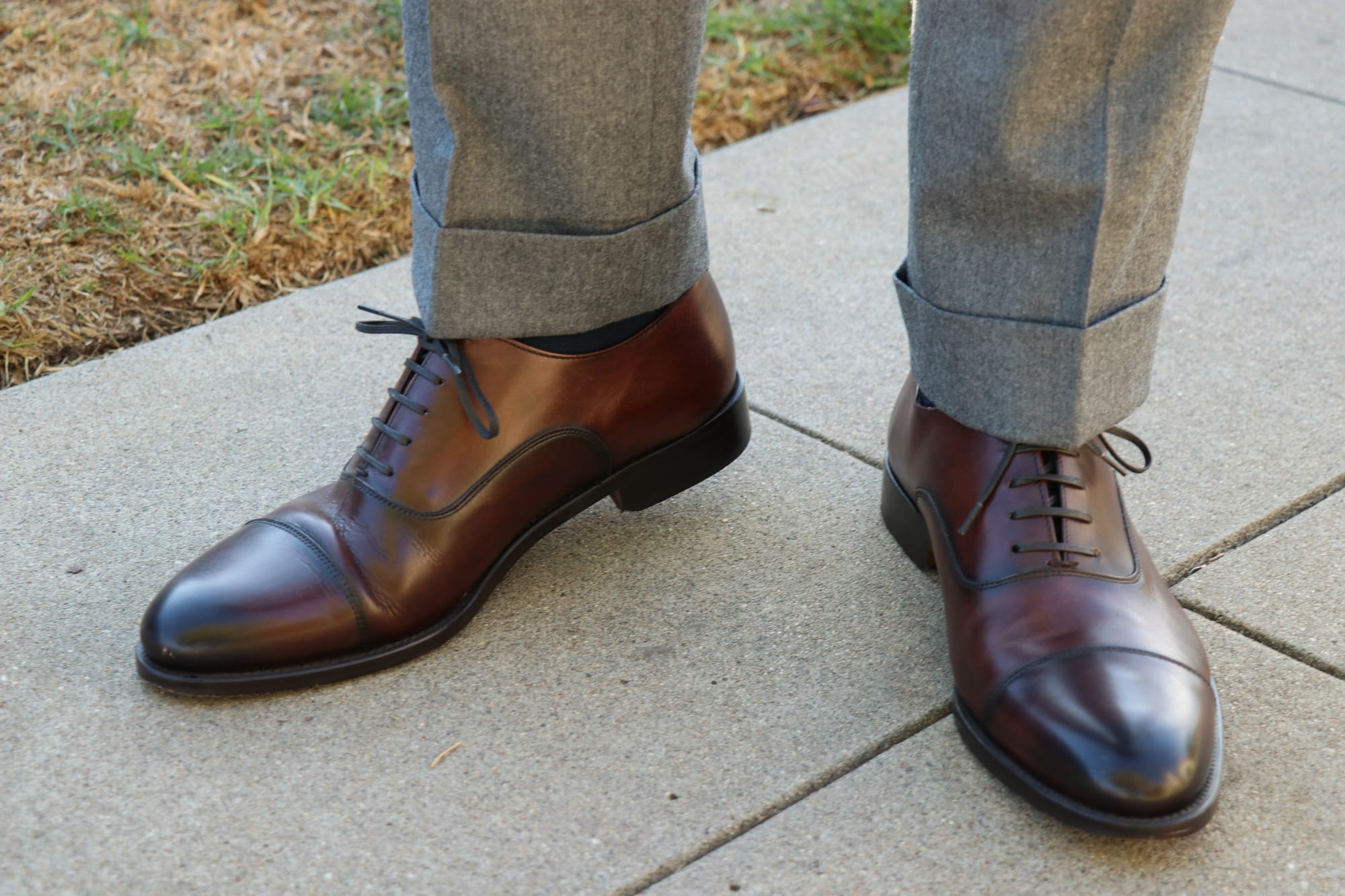
Dress shoes are the quintessential choice for business casual outfits. The beauty of this dress code is that you can opt for tasteful and subtle details to casualize your outfit combinations while remaining professional and sophisticated.
For example, classic leather Oxford dress shoes are a great way to remain timeless, but brown dress shoes in soft suede leather will look great when paired with dark-wash jeans, chinos, or odd trousers made of materials such as tweed, corduroy, linen, etc.
Loafers are equally elegant for business casual outfits but decidedly more casual. The same rules apply to them as to the aforementioned Oxford dress shoes. Quality leather loafers can evoke a laid-back appearance without looking too casual.
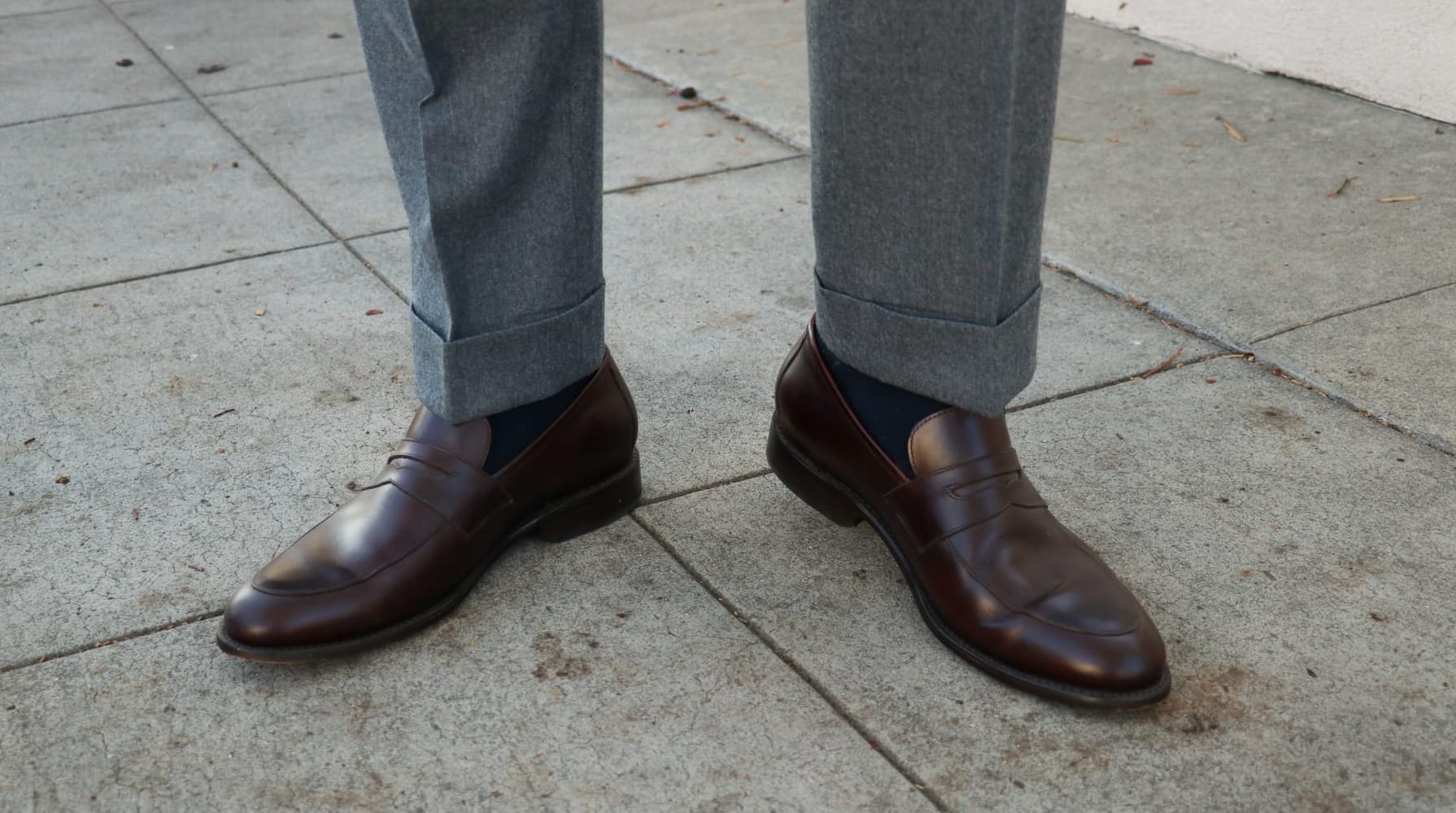
Be sure to select deep brown dress shoes. Brown is often the most versatile footwear color, complementing a neutral-colored wardrobe.
DRESSY BOOTS
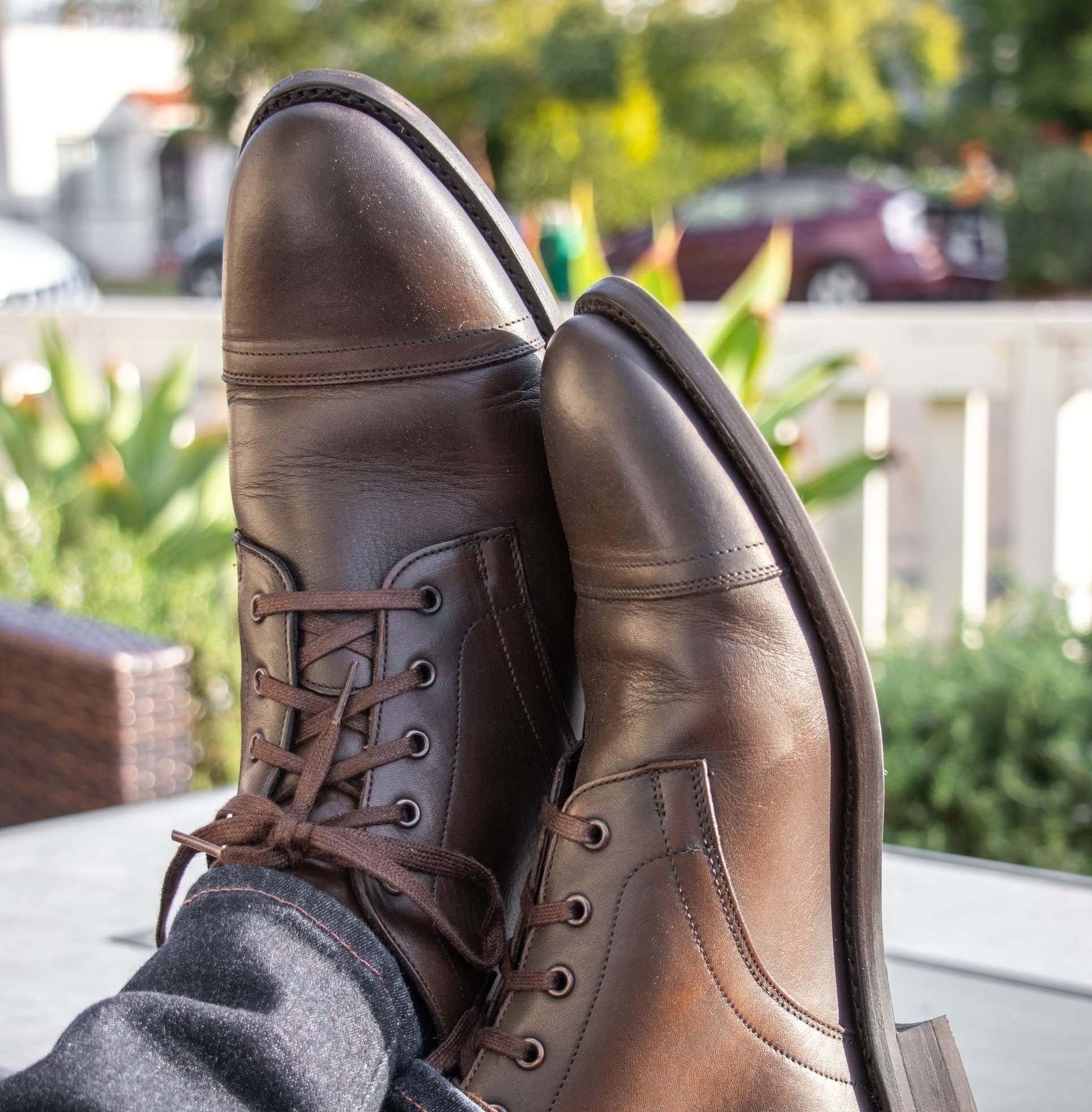
For those who like boots or need something warmer and sturdier for the fall and winter months, look no further than a brown leather cap-toe lace-up boot or leather Chelsea boots.
A great pair of dress boots will further expand your footwear options, supporting your business attire.
CLEAN WHITE SNEAKERS
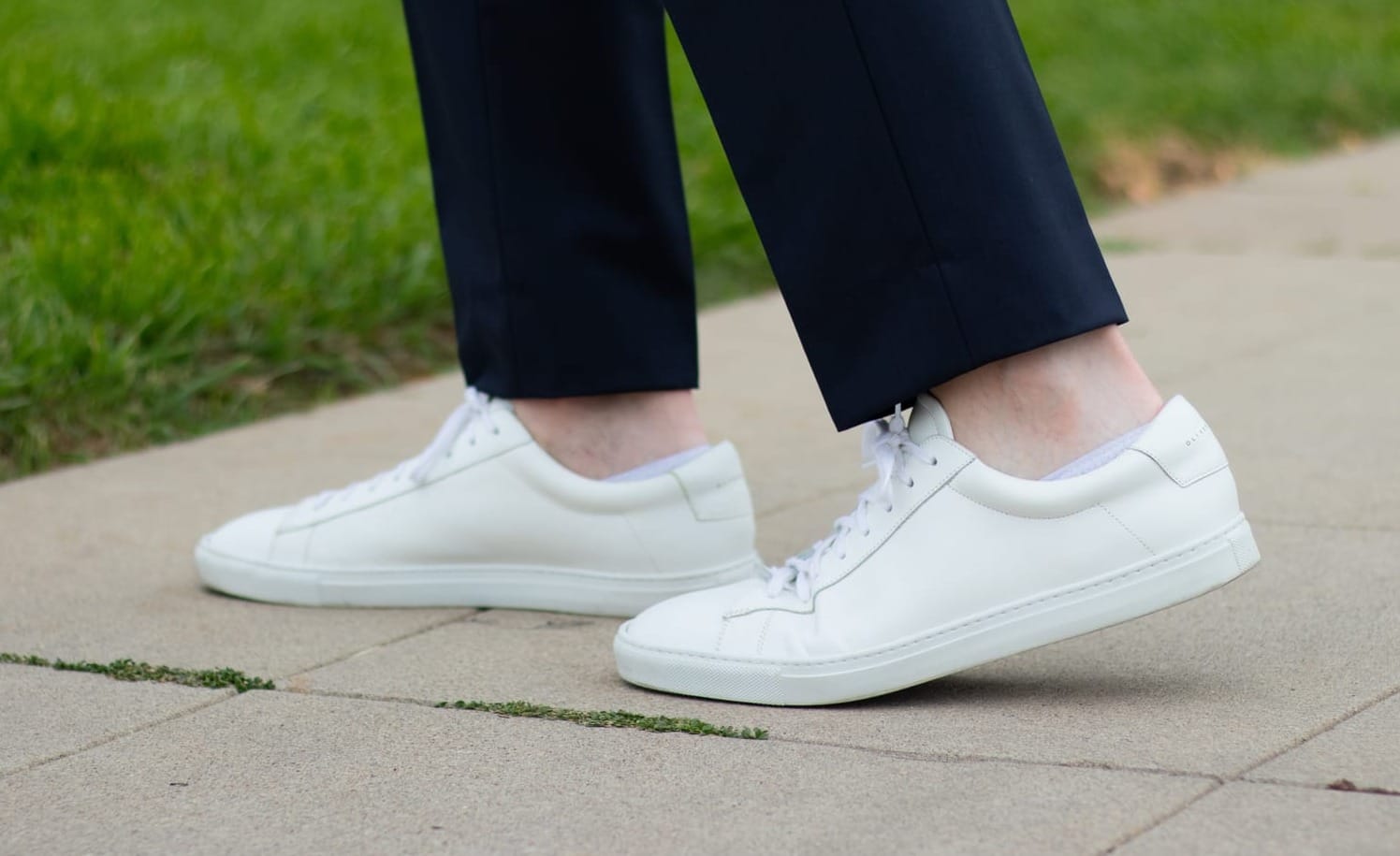
White sneakers are another highly versatile shoe type, but they are certainly the most casual footwear option I recommend to any man for a dress code like this.
A pair of clean white leather sneakers are best reserved for modern "smart casual" outfits (more on this in a bit), but they are surprisingly versatile for all manner of occasions.
Traditionally, wearing white sneakers is unacceptable for a business casual dress code. However, given the widening definition of a "professional look" in today's workplaces, I believe there are numerous opportunities for men to incorporate sneakers into their office wardrobe rotations.
Leather goods are often pricey, but you don't have to break the bank with multiple hundreds of dollars sunk into a pair of minimalist white leather sneakers.
Brands like New Republic, Thursday Boot Company, and Beckett Simonon offer great options at honest and affordable prices. These options are often built with quality materials that will perfectly suit your needs.
BLAZERS & SPORT COATS
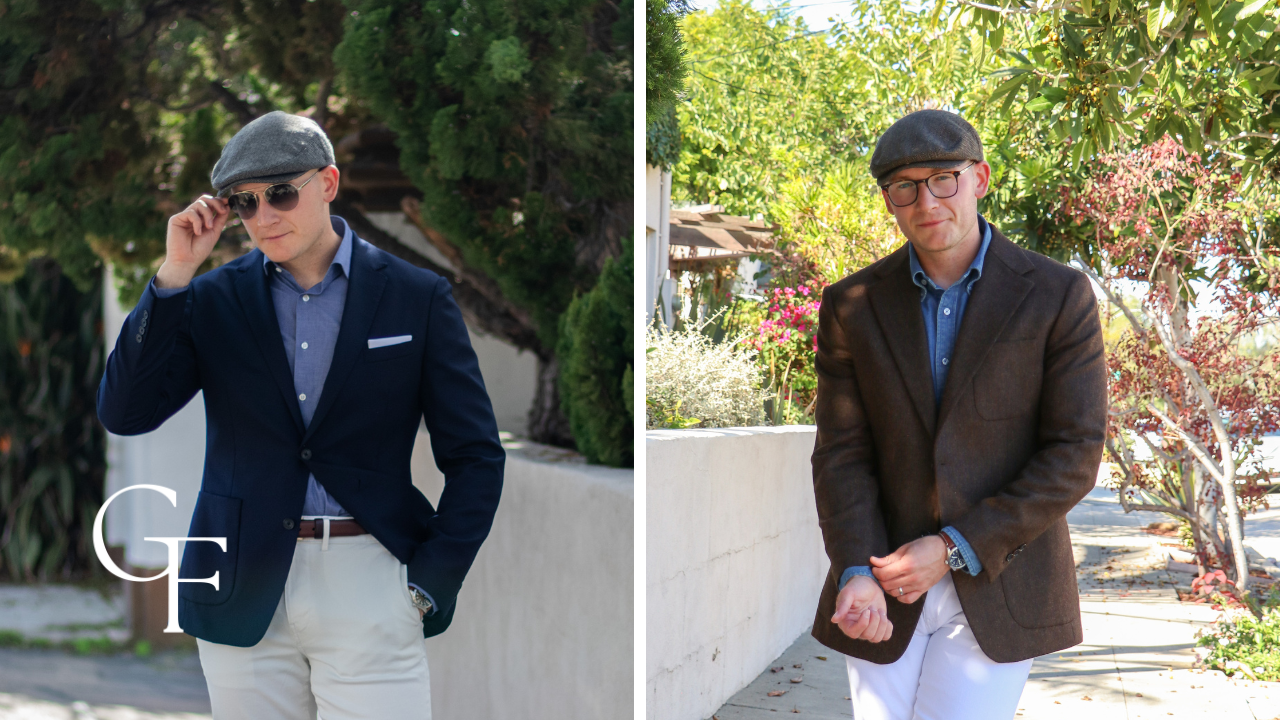
Blazers and sport coats are the best way to adopt a professional and tasteful look without going overboard with a suit. Although they are fundamentally different, they can be utilized in much the same way.
Paired with chinos, dark-wash jeans, and any neutral-colored dress pants, the blazer and sport coat enhance any conventional outfit by giving it a sophisticated, professional, and even tailored look to an otherwise basic ensemble.
To look put together for any function, you can wear most blazers and sport coats with a crisp cotton polo shirt, Oxford-cloth button-down shirt, or classic dress shirt (we will discuss the differences between these shirts momentarily).
Whether you purchase a classic navy blazer or a sport coat, you don't need to own both to get started. There are virtually limitless outfit combinations available to anyone who owns one or the other.
Be sure to prioritize neutral colors for your business casual outerwear and additional pants and shirts, which will appropriately complement each color in your wardrobe rotation.
SWEATERS
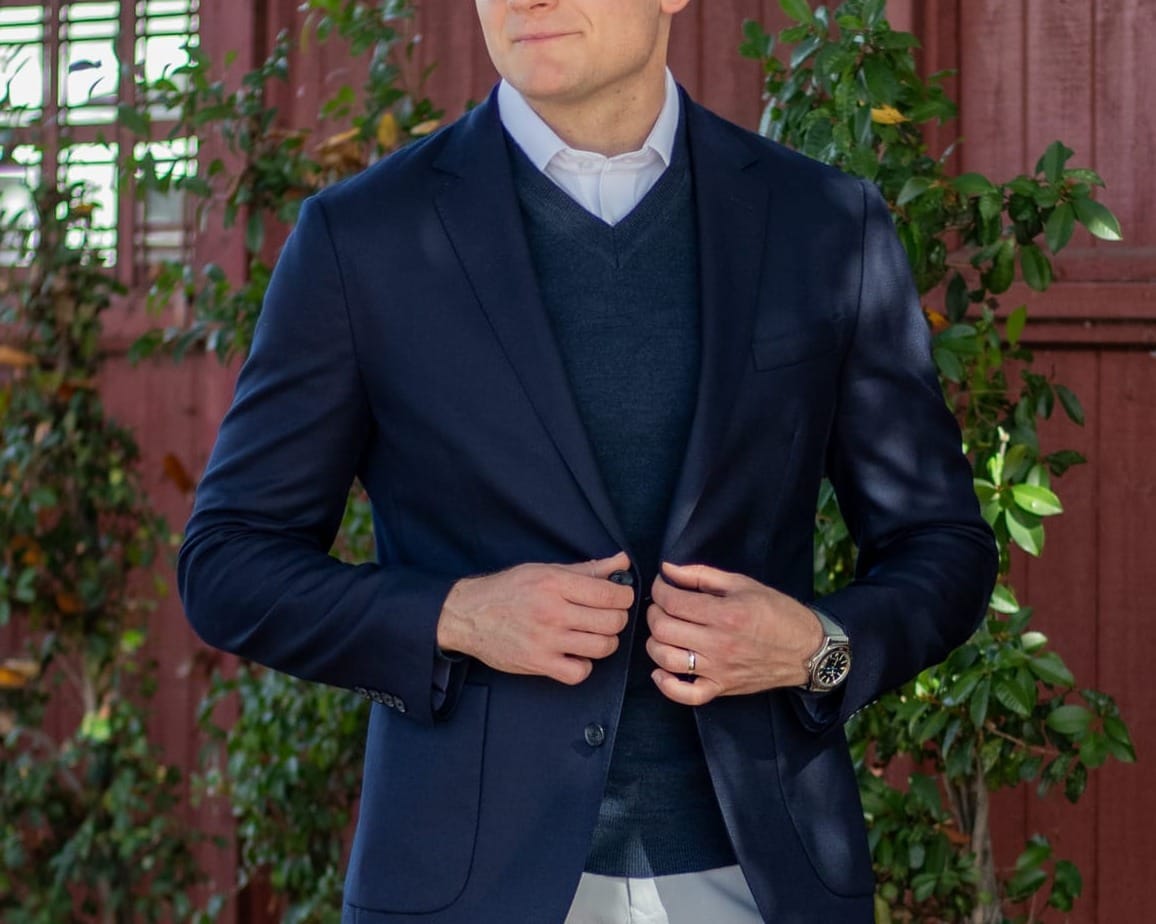
If you live somewhere with colder weather during the winter months, you will often need to layer your outfit with warm sweaters. If you are such an individual, I recommend investing in a gray crewneck sweater and a navy blue v-neck sweater.
So many sweater options are available, from quarter-zip sweaters to buttoned cardigans, chunky shawl cardigans, cable knits, and more. Owning every type is unnecessary, but plan accordingly if you need the extra warmth for the fall and winter months.
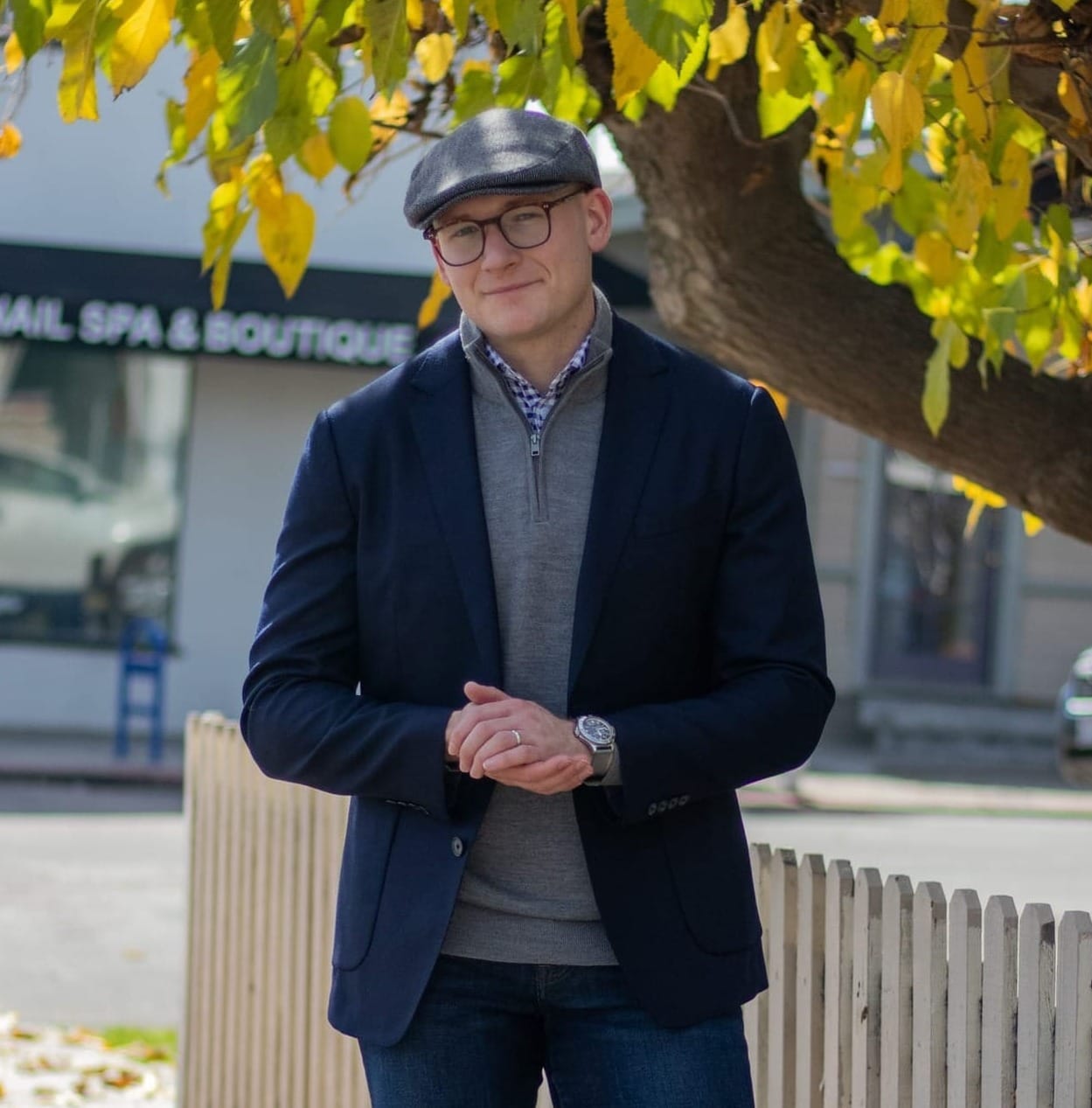
COATS AS BUSINESS CASUAL OUTERWEAR
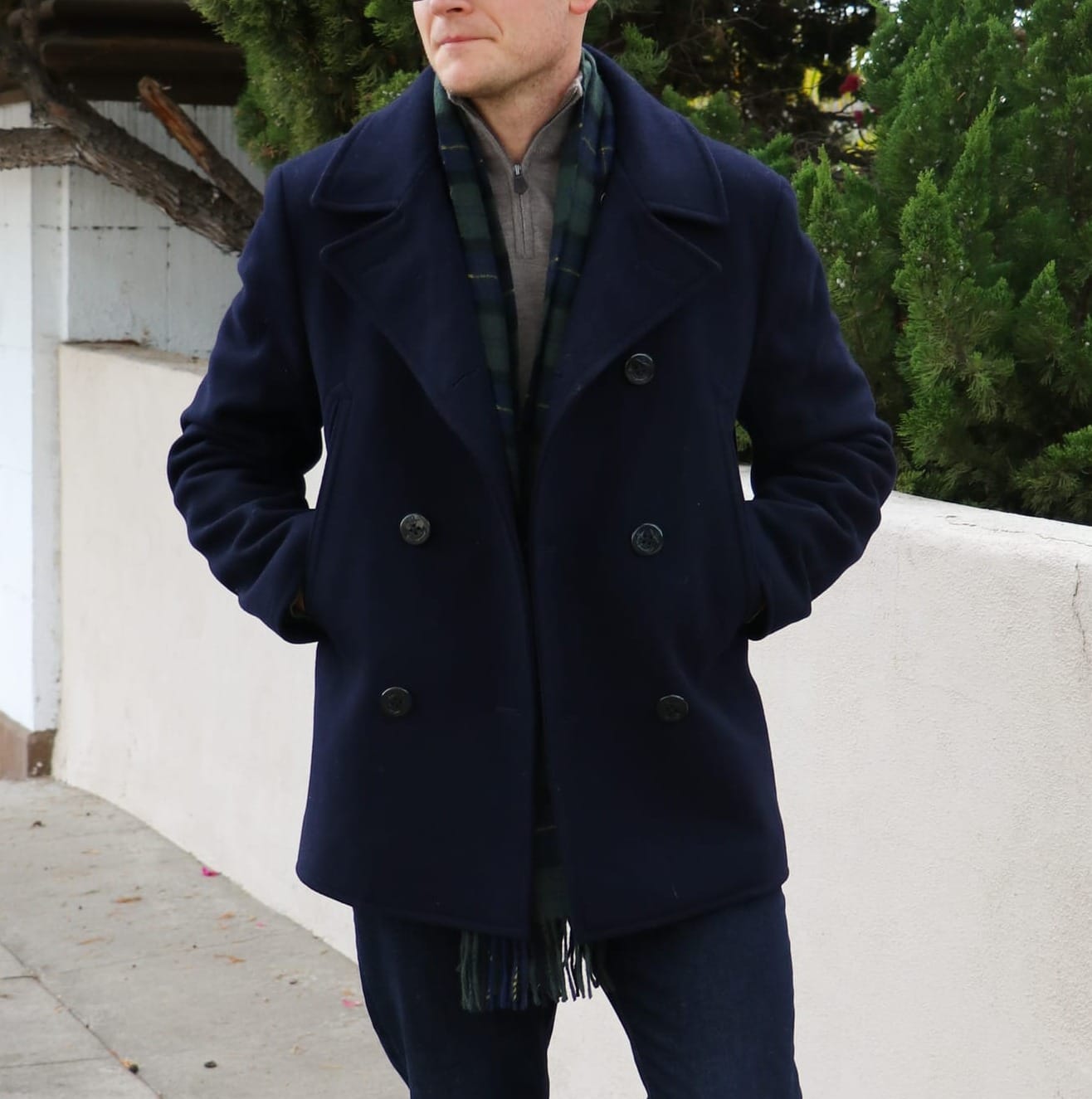
Of course, sweaters might not always be enough to keep you warm (depending on where you live and the weather you encounter).
Overcoats, car coats, and quilted jackets are excellent choices for providing warmth and elegance while on your way to the office, but if you ask me, one of the most underrated outerwear choices for men is the classic navy peacoat.
Either way, you'll be warm and ready to tackle the day, looking like you walked straight out of a GQ magazine without trying too hard to look presentable for the workplace.
CASUAL NECKTIES
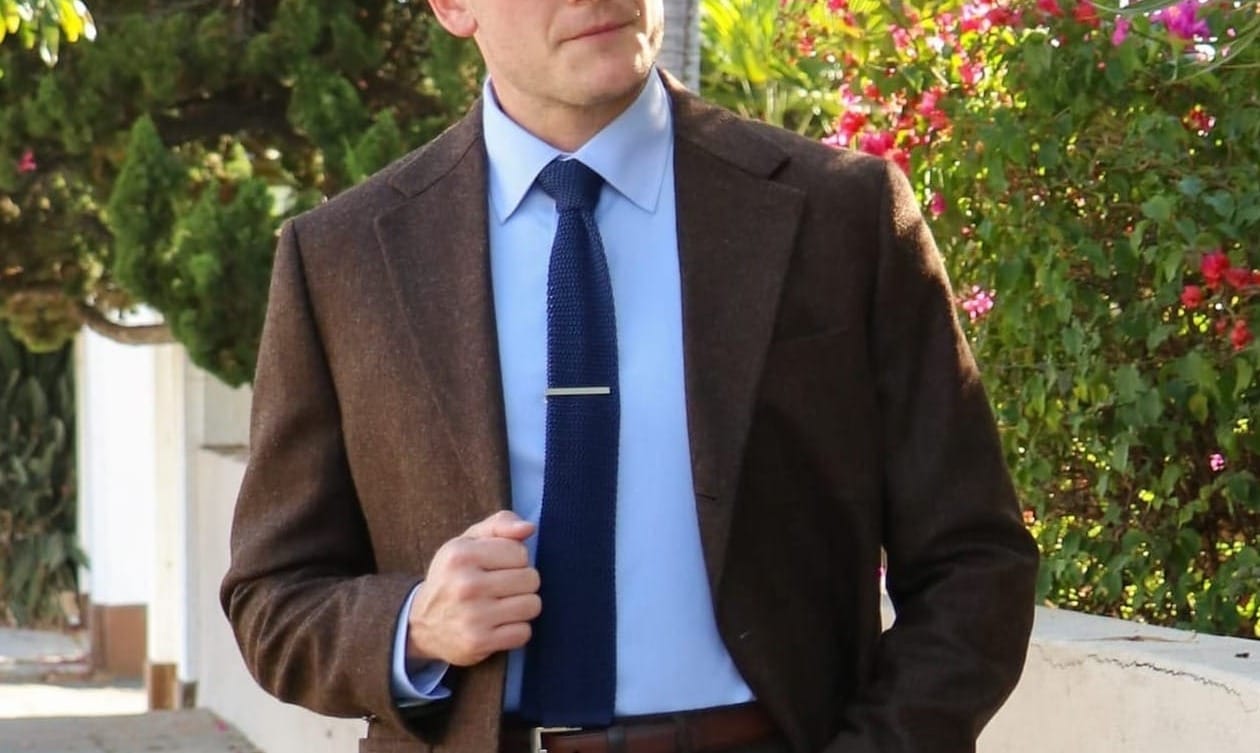
Some people believe neckties should not be part of a business casual wardrobe. However, certain neckties are appropriate if they have casual qualities such as pattern and texture.
Nothing epitomizes casual elegance quite like a classic knit tie. Knit ties are an excellent way to up the ante by presenting a casual yet sophisticated and intelligent look. They can stand out in some truly unique ways. Given their often flat edges, they can keep things relatively laid-back if you wish to avoid appearing too formal.
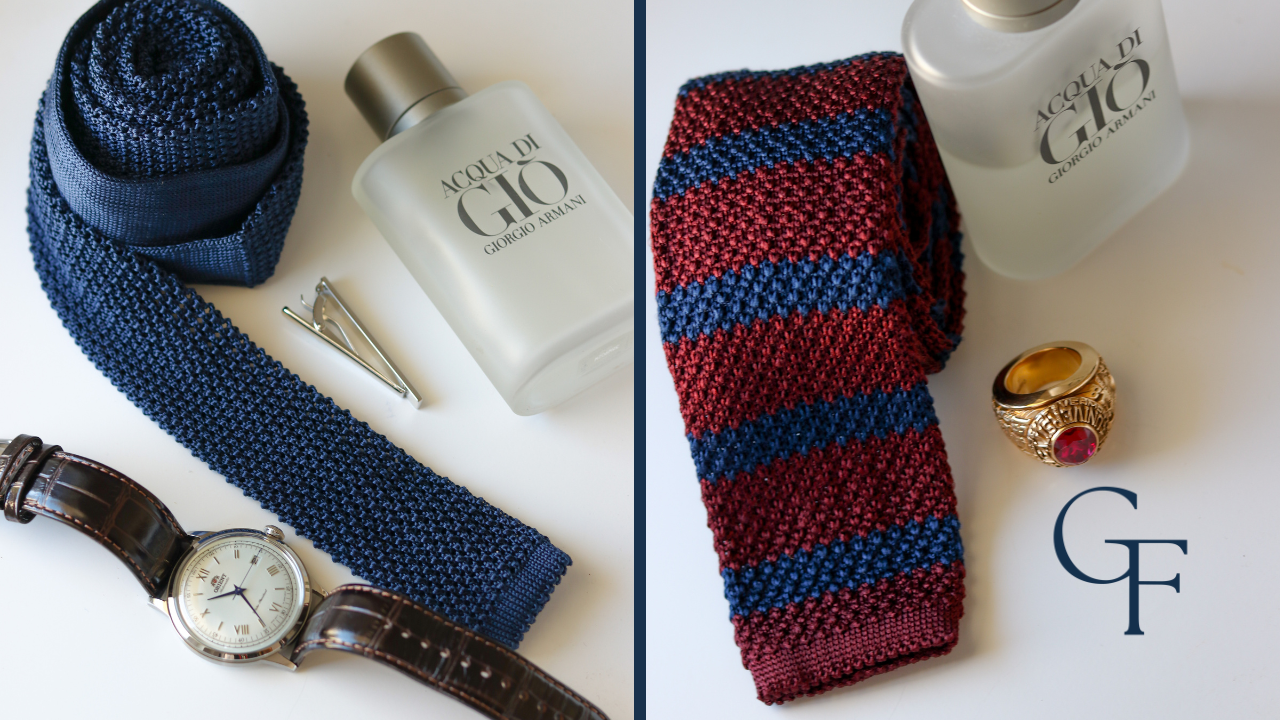
You can choose a solid color like navy blue or a bold striped design in deeper shades of color. Of course, if the flattened edges of knit ties don't appeal to you, a grenadine necktie in navy blue, emerald green, or burgundy red is also highly textured and versatile.
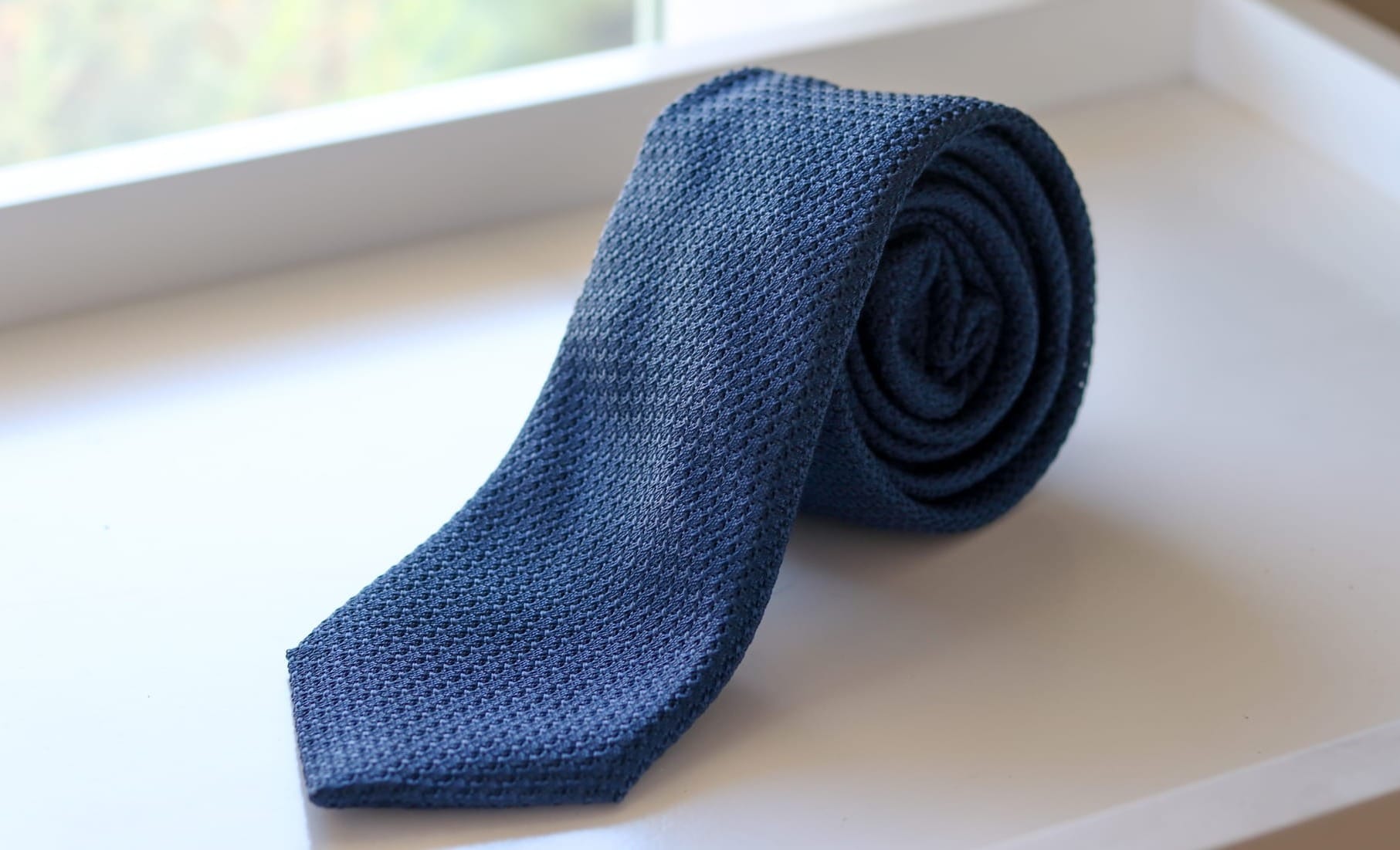
These types of ties go well with anything from a navy blazer to a sport coat to a Harrington jacket or denim jacket. They often travel well because they maintain their shape, roll, and fold nicely into tightly packed luggage. Due to the thickness of the knit weave, they do not become creased and crumpled.
TASTEFUL ACCESSORIES
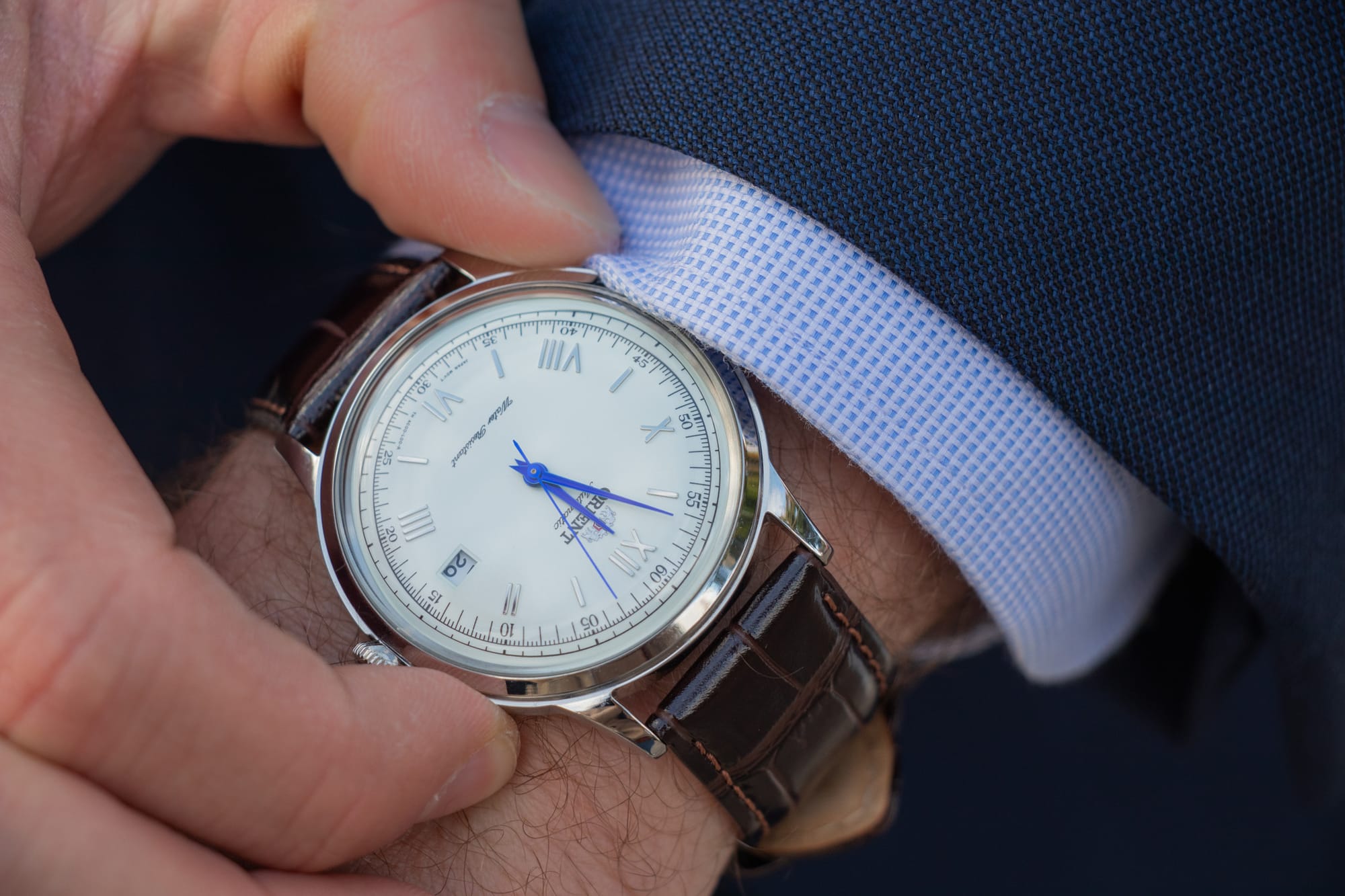
We can't forget some tasteful accessories, such as versatile wristwatches, eyeglasses, tie clips, hats (assuming your work allows them), scarves for the winter, and maybe a ring or two.
OVERSHIRTS
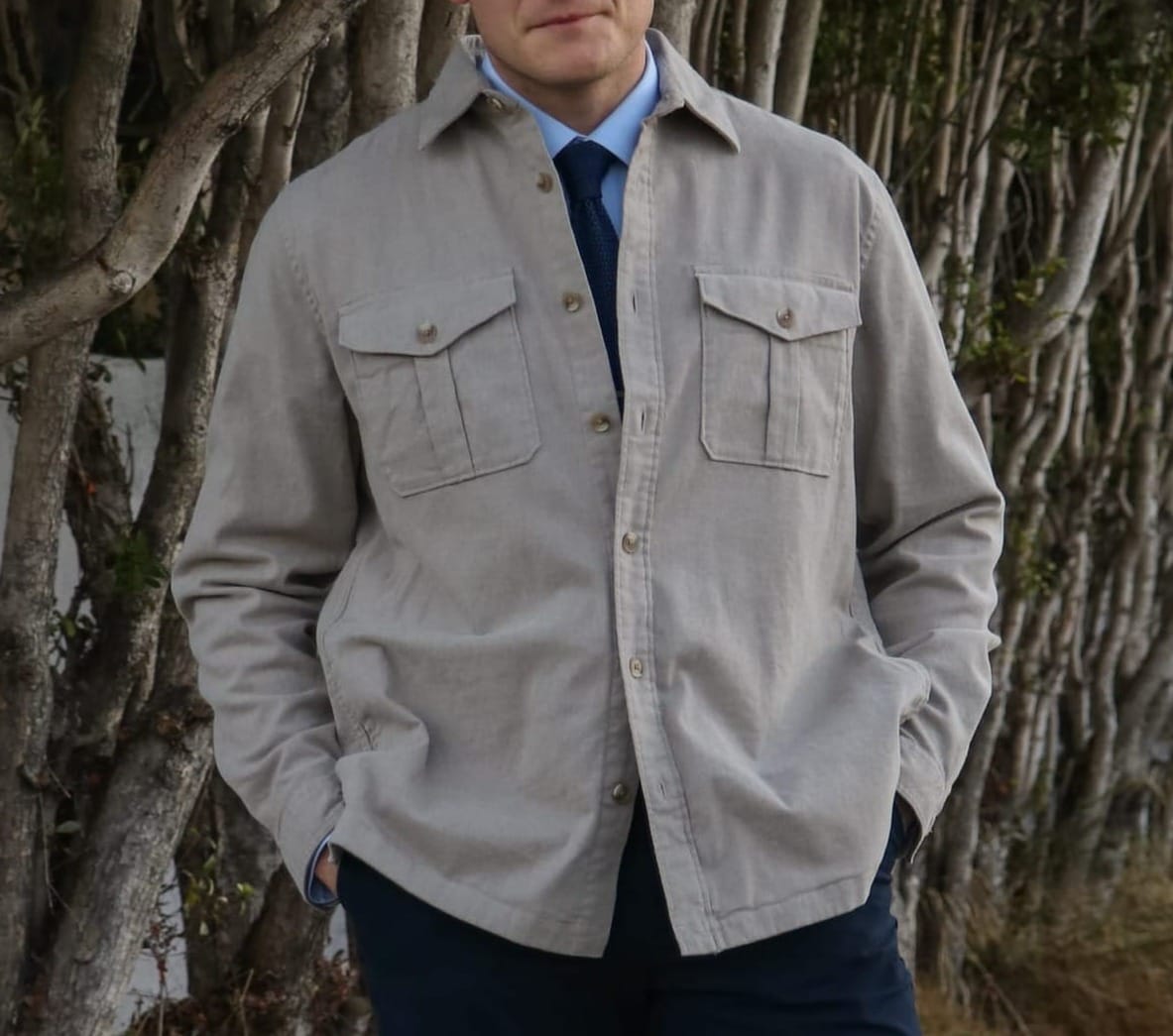
Yes, you can wear nicer overshirts in business casual settings. You don't have to buy an overshirt made of premium fabrics, but there are ways to wear one in a professional setting.
Overshirts are not as formal as blazers or sport coats, but they can certainly be dressed up or down, provided your choice of accessories (e.g., neckties, pants, and shirts) are a little more casual. A nice overshirt in a neutral color like tan or dusty olive is a great way to add a tailored look to an otherwise basic outfit.
OXFORD-CLOTH BUTTON-DOWN SHIRTS (OCBD)
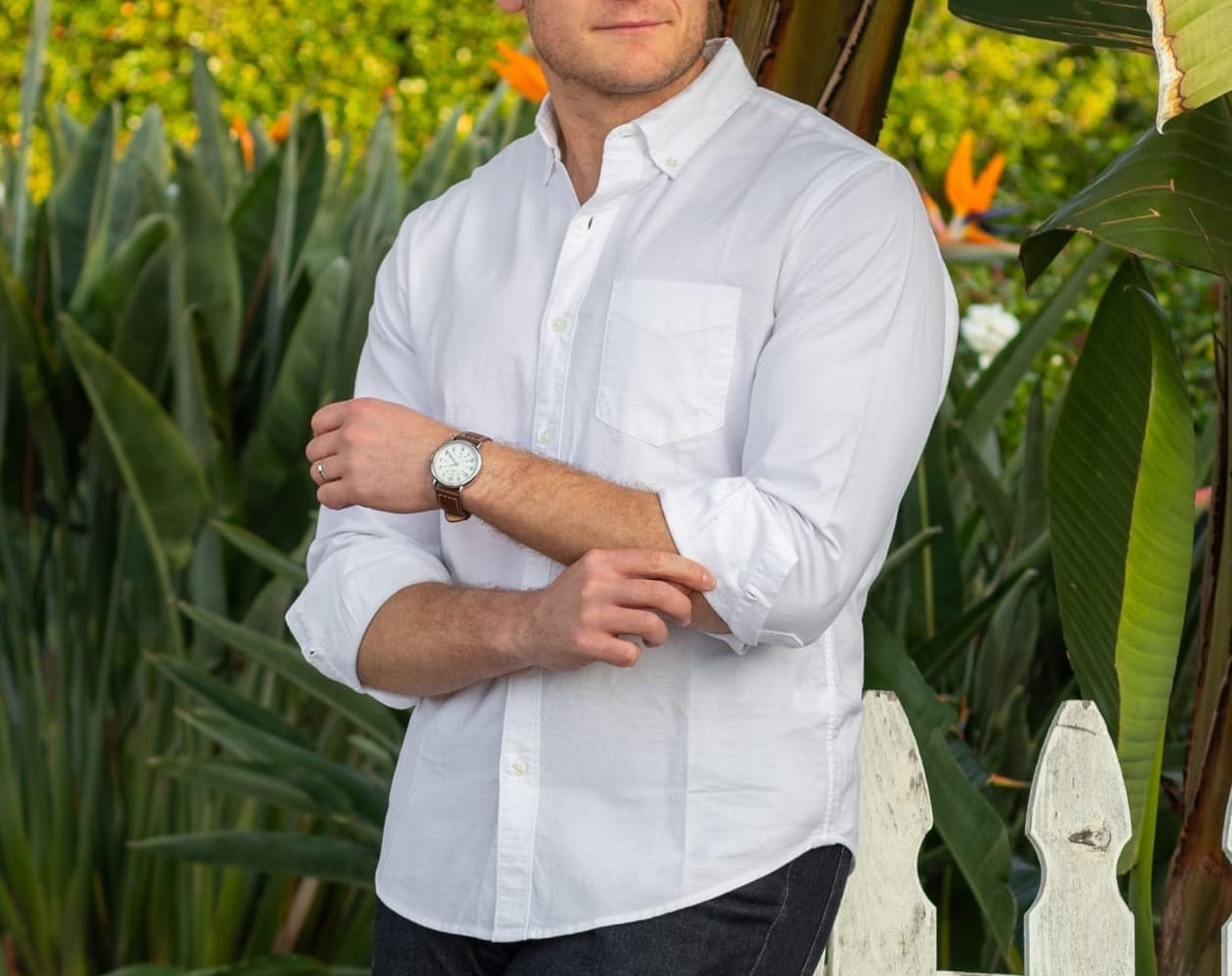
Classier than a standard t-shirt or polo but less formal than a dress shirt, the OCBD in clean white or brilliant light blue is perfect for a business casual wardrobe.
You have an intelligent, dressier shirt that buttons up the front and a collar that can be buttoned down to remain in place.
Dress shirts are typically much longer because they are always meant to be tucked in. However, the OCBD shirt is not as long because it is intended to fall just past your waist (around mid-crotch) and can be tucked in or untucked.
Of course, incorporating casual neckties can also work with an OCBD shirt, provided that it is not too thick and bulky for the collar of your shirt.
POLO SHIRTS
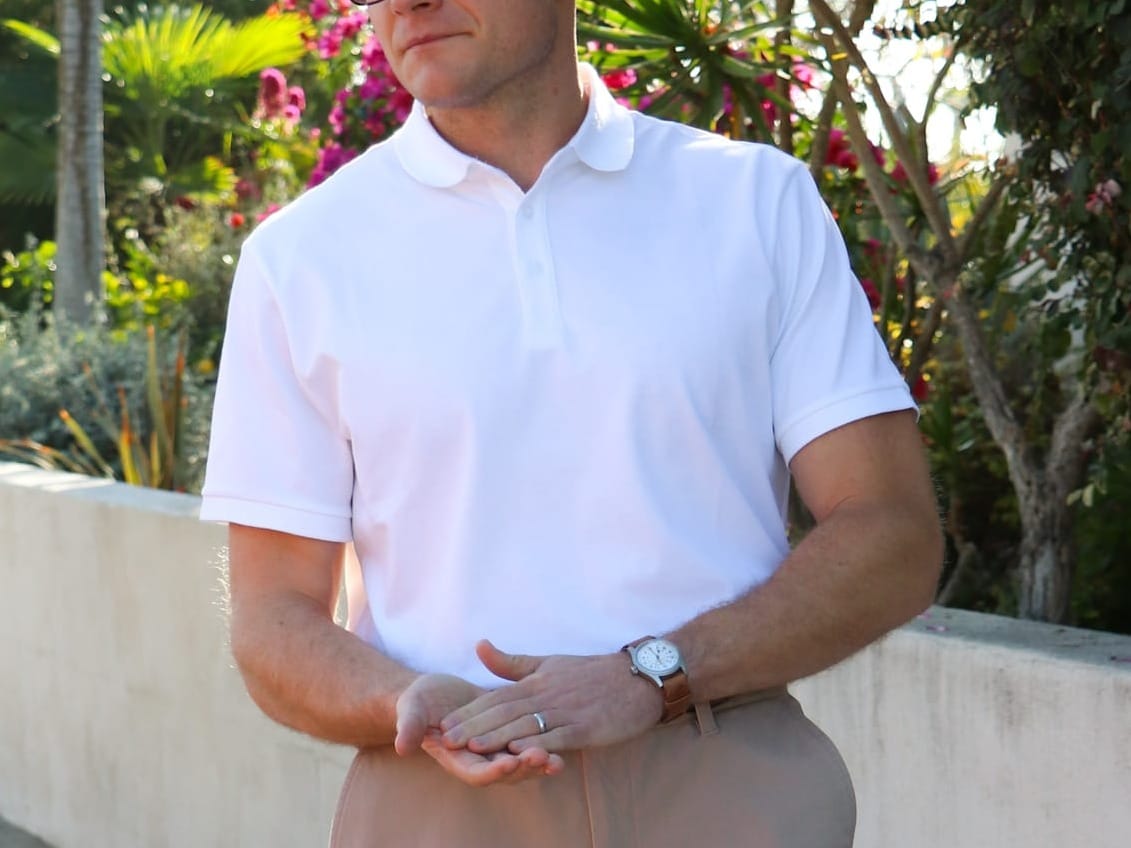
You knew it was coming. The polo shirt is a timeless and handsome necessity that every man must prioritize having in his closet. Not all polo shirts are created equal, though. The 100% cotton pique polo shirt is the way to go for business casual settings.
Avoid "performance" polos, which contain cotton and artificial, moisture-wicking properties that allow for much stretch. While this might sound more comfortable, the performance polo's sporty nature often proves too casual for the workplace. Save these types of polos for the golf course!
Opt for classic pique polo shirts or long-sleeve sweater polos in wool, cotton, or cashmere to add a mature and elegant texture all year round.
DRESS SHIRTS
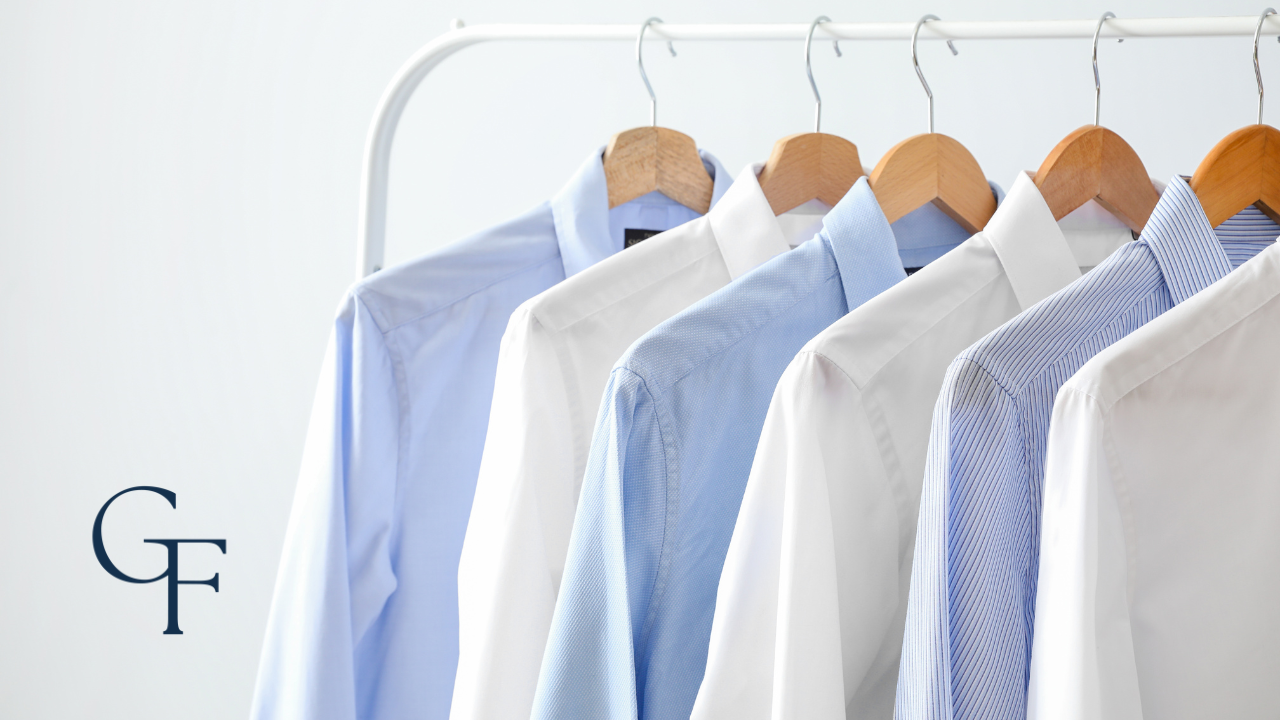
Dress shirts are the formal "older brother" to the previously mentioned OCBD shirts. They are pretty long because they are meant to be tucked in and do not often come with button-down collars (though, with the numerous options available for customization these days, you can certainly have one made with your specific stylistic preferences).
Dress shirts pair nicely with blazers, sport coats, dress pants, and chinos. To get started, you need only a quality white poplin dress shirt and an ice blue Oxford-cloth dress shirt, with the white variant being more formal.
Dress shirts should be reserved for events with stricter dress codes or those requiring a necktie, dressier pants, and dress shoes.
CHINO PANTS
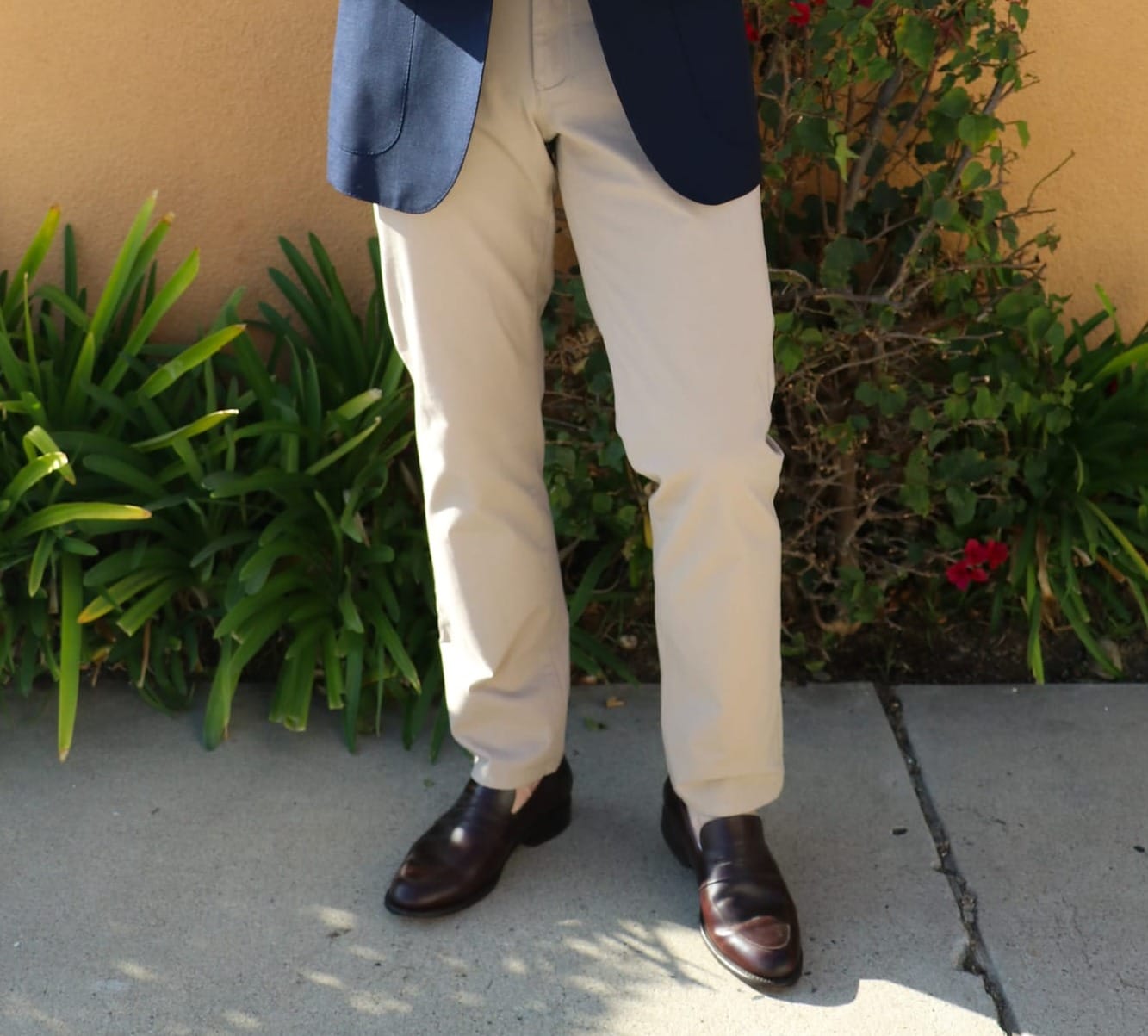
Classic chinos are quite possibly the most versatile pants on the planet. They can be worn in various ways, whether you're dressing up for the office or dressing down for a more casual business luncheon. These pants are an excellent workhorse staple that will never cease to be stylish.
When building your wardrobe, focus on key neutral colors such as khaki, navy, olive green, and darker brown. These will undoubtedly serve as excellent staples in your closet, whether for a business casual dress code or everyday life.
DRESS PANTS
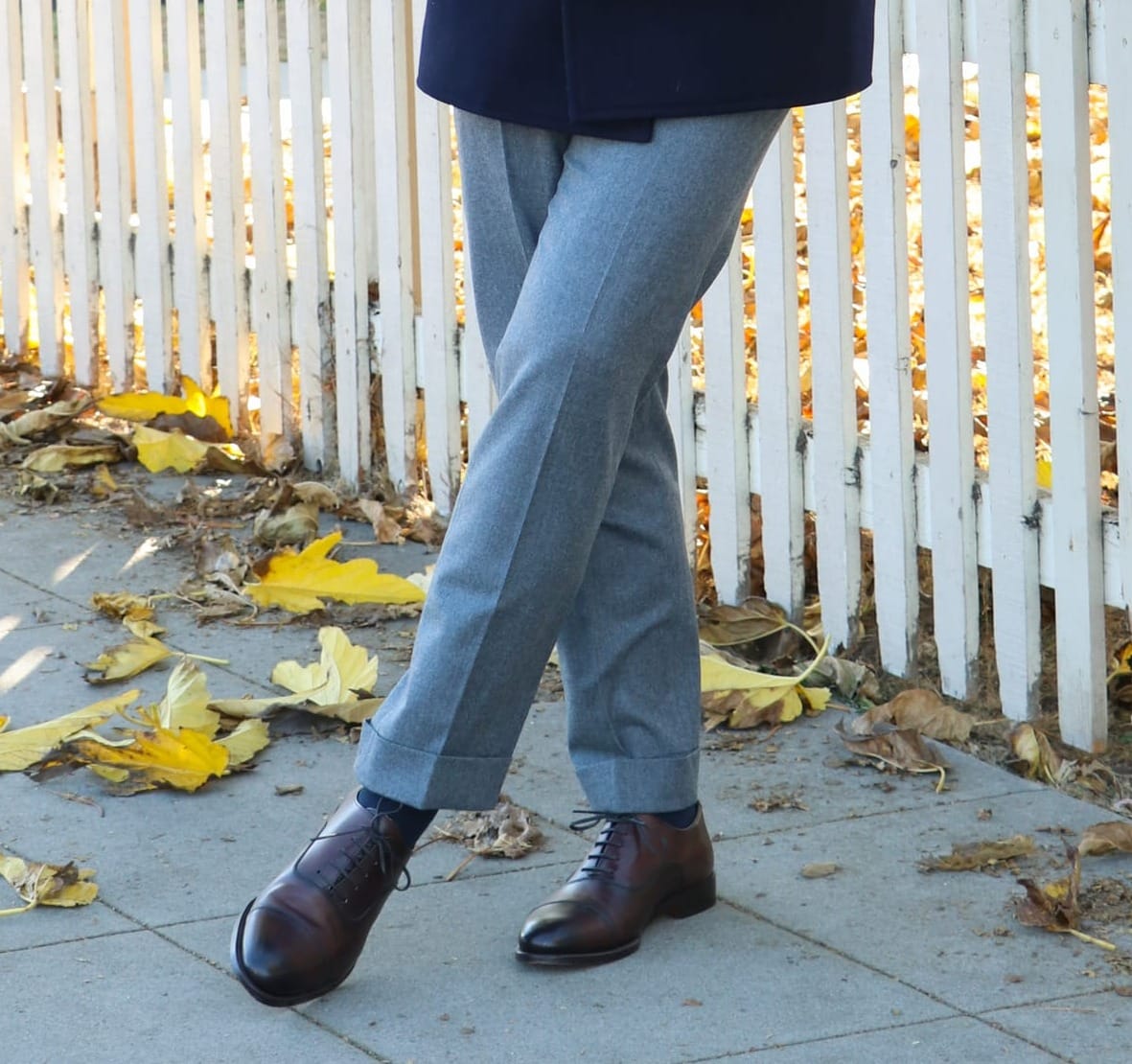
Dress pants have always remained a business casual staple and typically work the best when incorporated with blazers and sport coats. They offer a clean and tailored look that can evoke a similar level of formality as a conventional suit without going too formal.
Flannel, brushed cotton, tweed, linen, hopsack, and corduroy are the best workhorse fabrics for dress pants (also known as "odd trousers"). Owning dress pants in all these fabrics isn't essential, though investing in them over time is a wise choice.
Each option provides texture and can offer tasteful patterned options that allow your unique personality to shine through. An odd trouser is not "odd" in the sense that it is strange or zany, but that is meant to serve as a standalone piece for which numerous options exist for pairing with other garments.
DARK-WASH JEANS
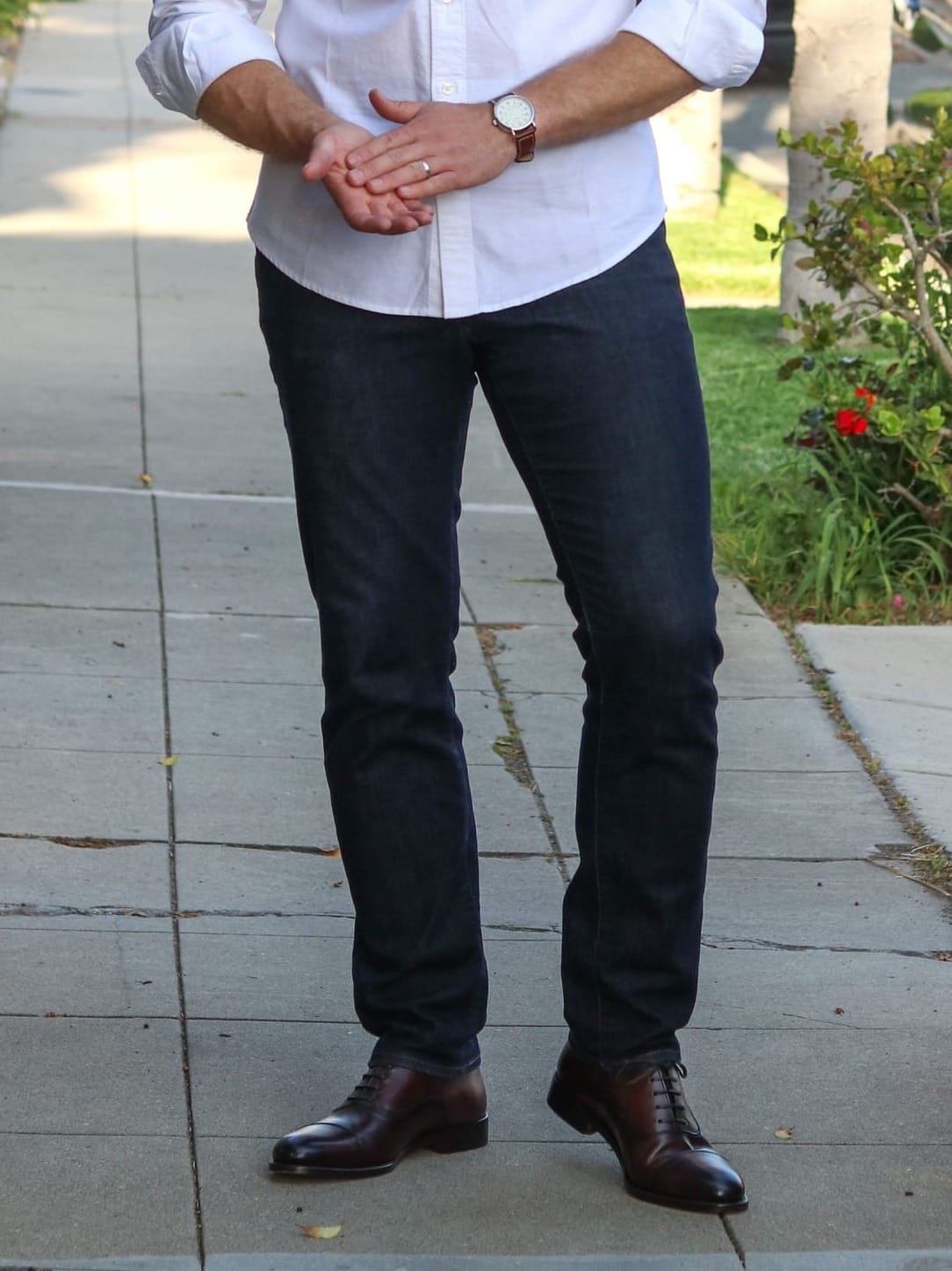
Some people will tell you never to wear jeans as part of a classic business casual wardrobe. However, as long as you only opt for dark-wash denim jeans that are clean, devoid of rips, tears, or distressing, and tailored well to fit your physique, they can be a great addition to your wardrobe, complementing your blazers or sport coats.
While these types of pants haven't always been accepted in more traditional business casual settings, they are highly versatile. They can provide much-needed texture to complement your other dressier pieces that might sport pattern and texture.
Business Casual & Smart Casual
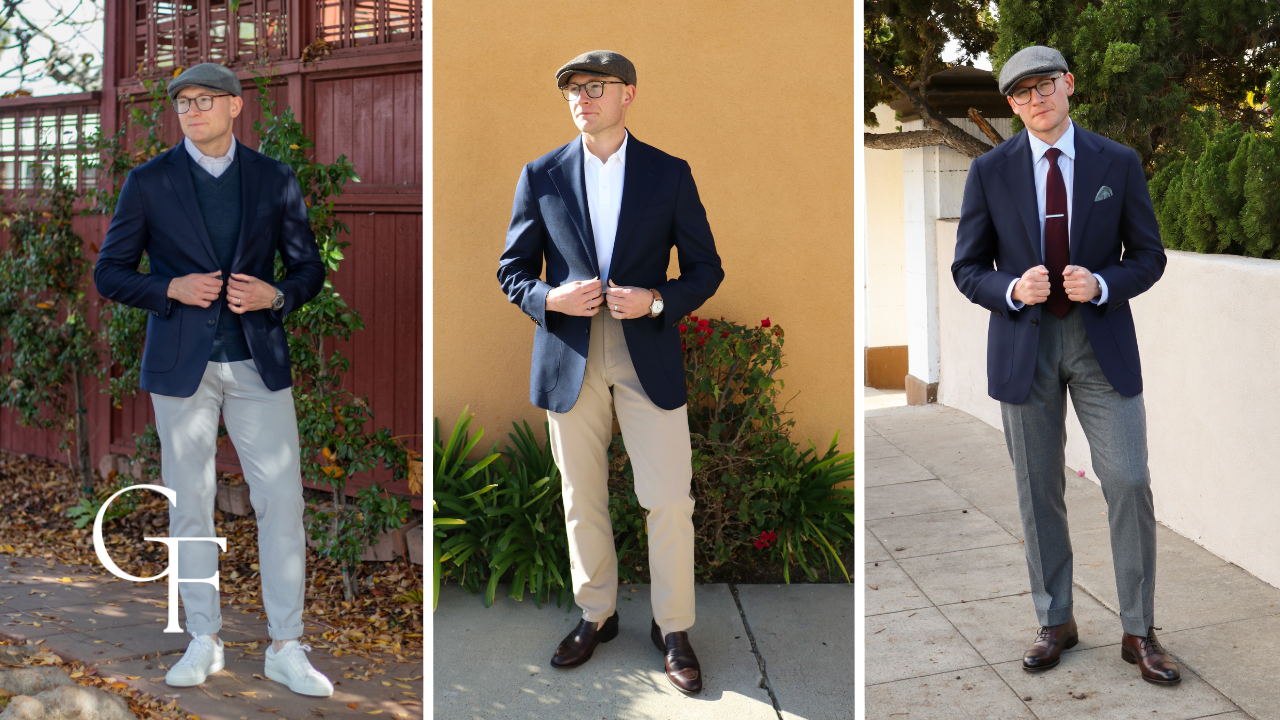
As mentioned, a "smart casual" dress code can apply to men's business casual, especially nowadays.
Business and smart casual prioritize a polished look but serve different occasions and environments. Business casual leans more toward the professional side, while smart casual offers more flexibility. There are no clear lines to separate the two.
10 Business Casual Outfit Examples
Here's how to create office-appropriate outfits that aren't too casual and will allow any man to look put together for the day ahead.
OUTFIT #1: LONGSLEEVE POLO, WOOL DRESS PANTS & LOAFERS
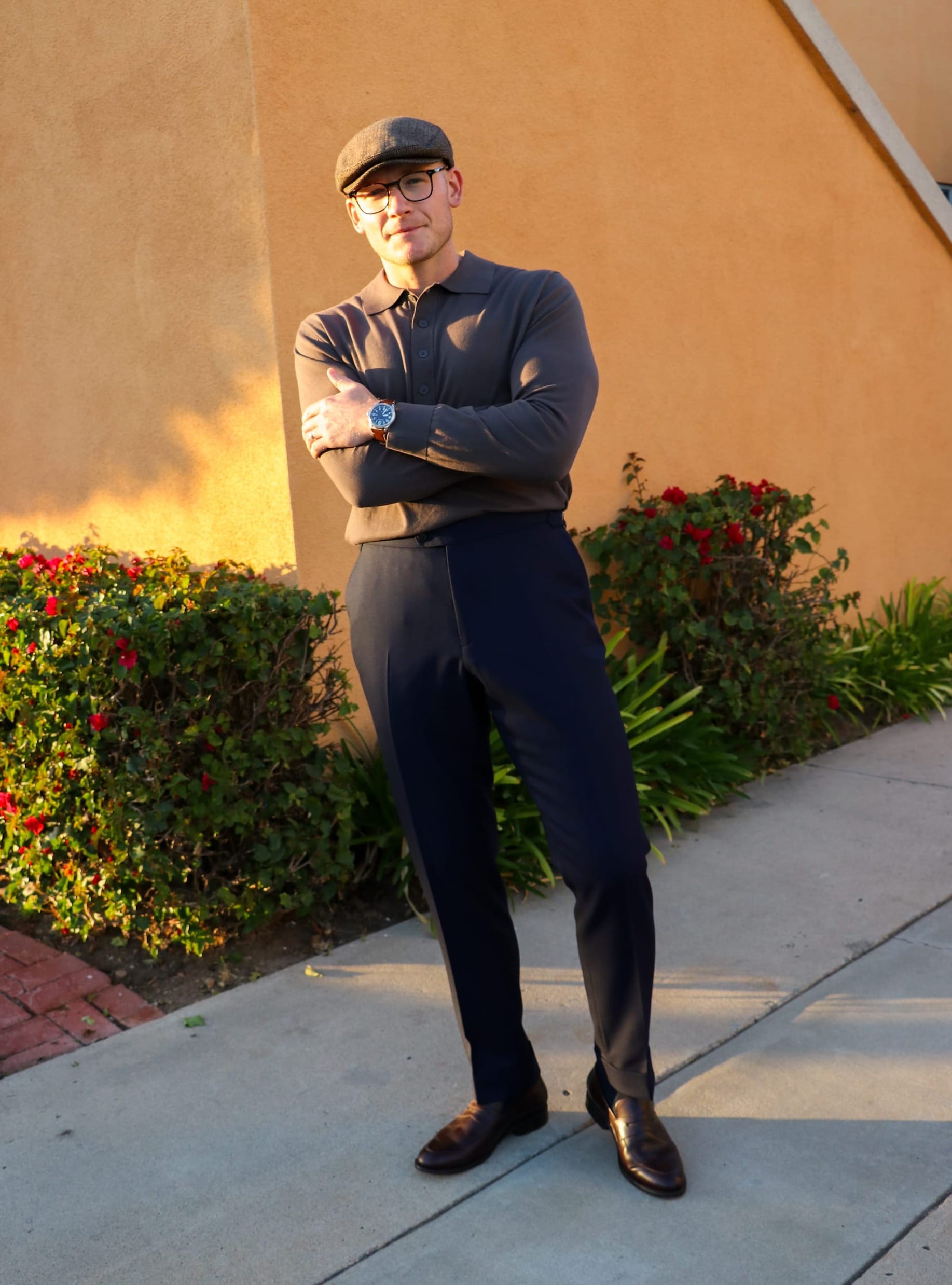
Casual yet elegant, a look like this is a smart way to incorporate a long-sleeved sweater polo into your office wear rotation and take advantage of those more casual days at the office.
Loafers work best to compliment this more casual look, but dressier Oxfords would also be acceptable.
OUTFIT #2: SMART CASUAL BLAZER, CHINOS & SNEAKERS
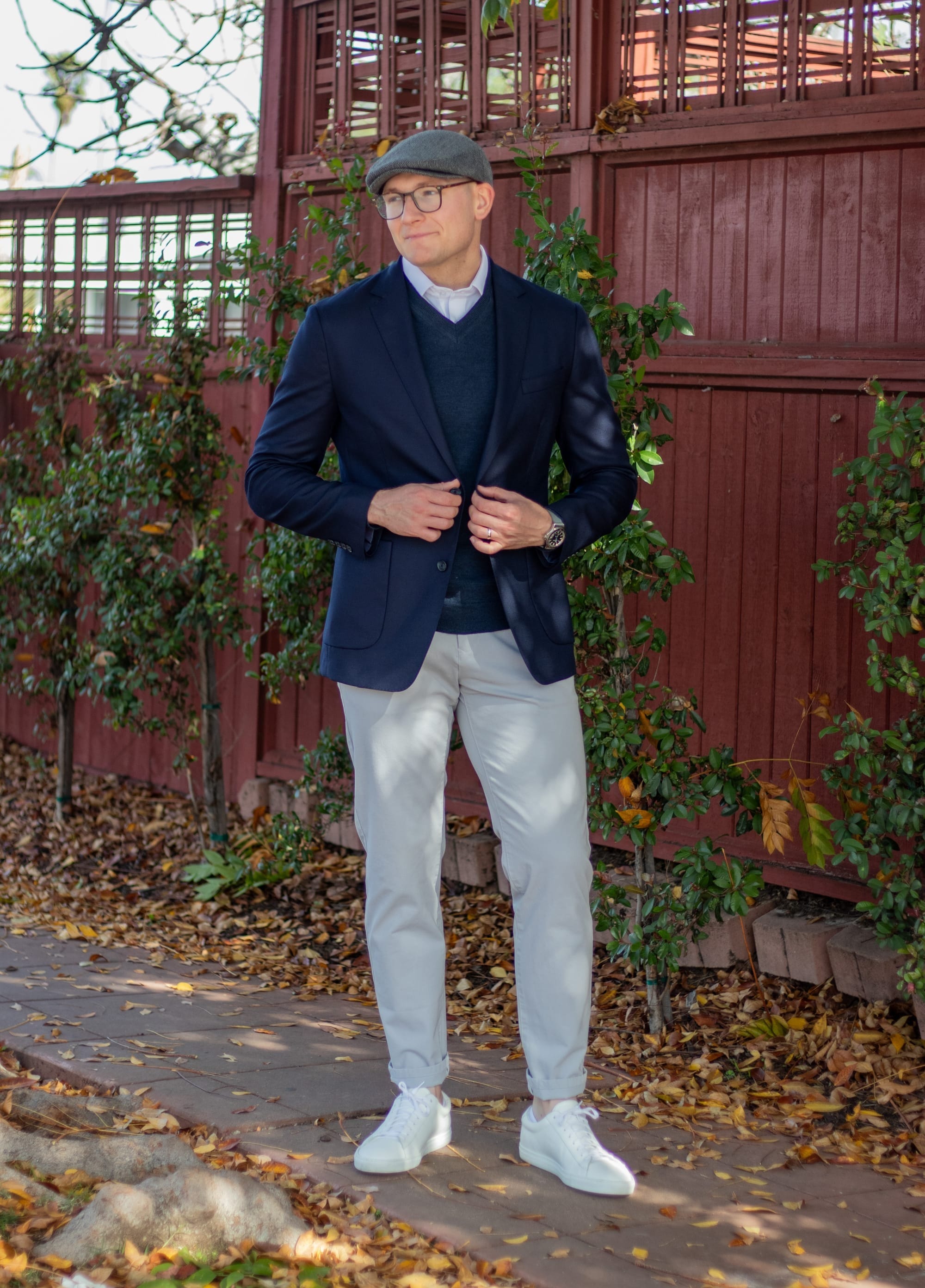
Here's how to smartly dress up those white sneakers I mentioned before: A classic navy blazer, light gray chinos pants, white dress-collar polo shirt, and layered with a navy blue v-neck sweater. Each element harmonizes well and provides subtle warmth and texture for the wearer.
The white polo shirt nicely complements the white of the sneakers, providing consistency for the overall look. This outfit is perfect for more casual spring or fall days at the office (provided you're authorized to wear the sneakers).
OUTFIT #3: CASUAL POLO, CHINOS & LOAFERS
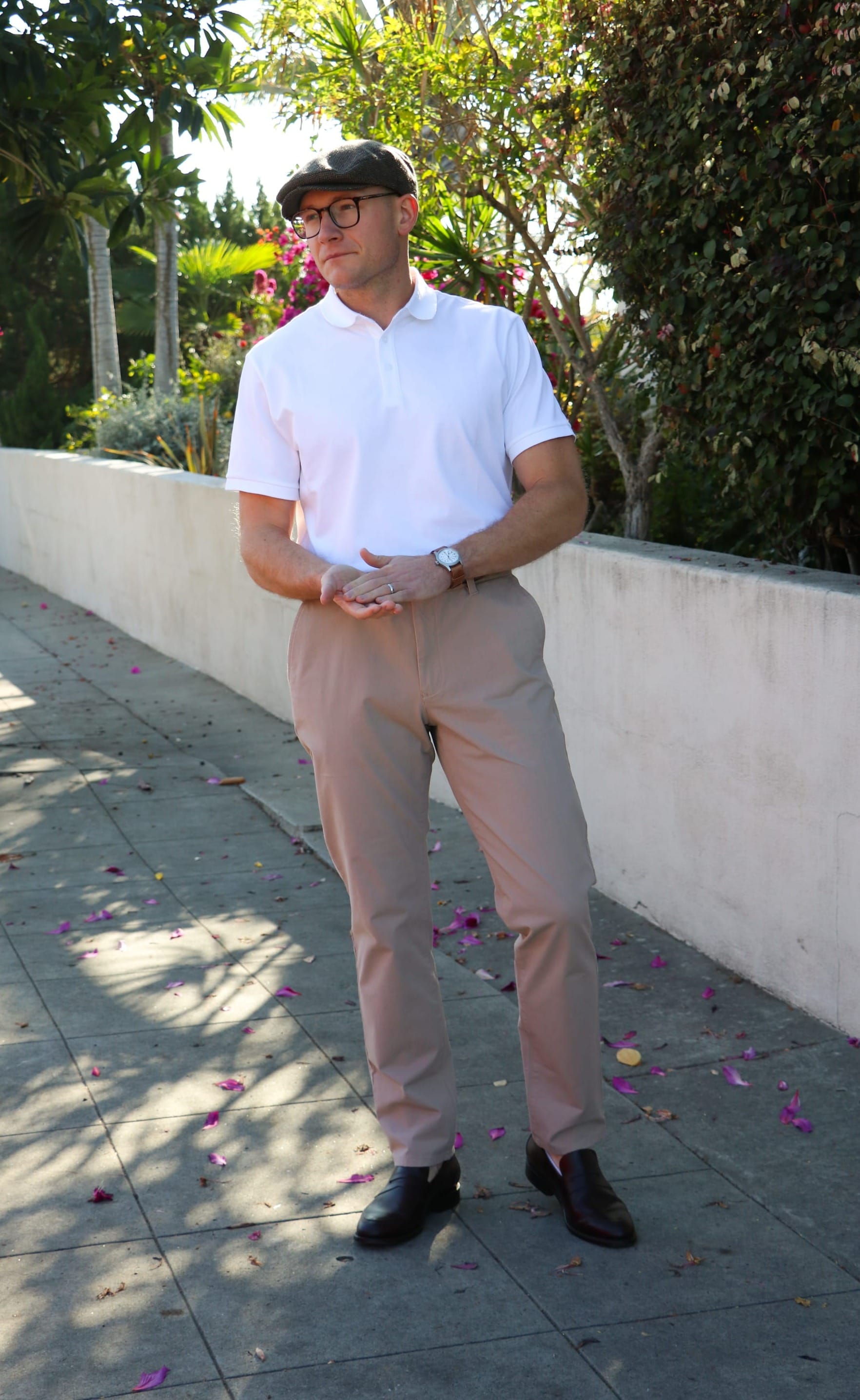
Here is how to use a classic white pique polo shirt effectively.
Paired with khaki chinos and a clean pair of brown leather loafers, this is a textbook example of a "casual" business casual outfit for men. The polo shirt is tucked in for greater formality, and the chinos fit is on point.
Just be sure to match your leathers when adding a belt.
OUTFIT #4: BUSINESS CASUAL BLAZER, CHINOS & LOAFERS
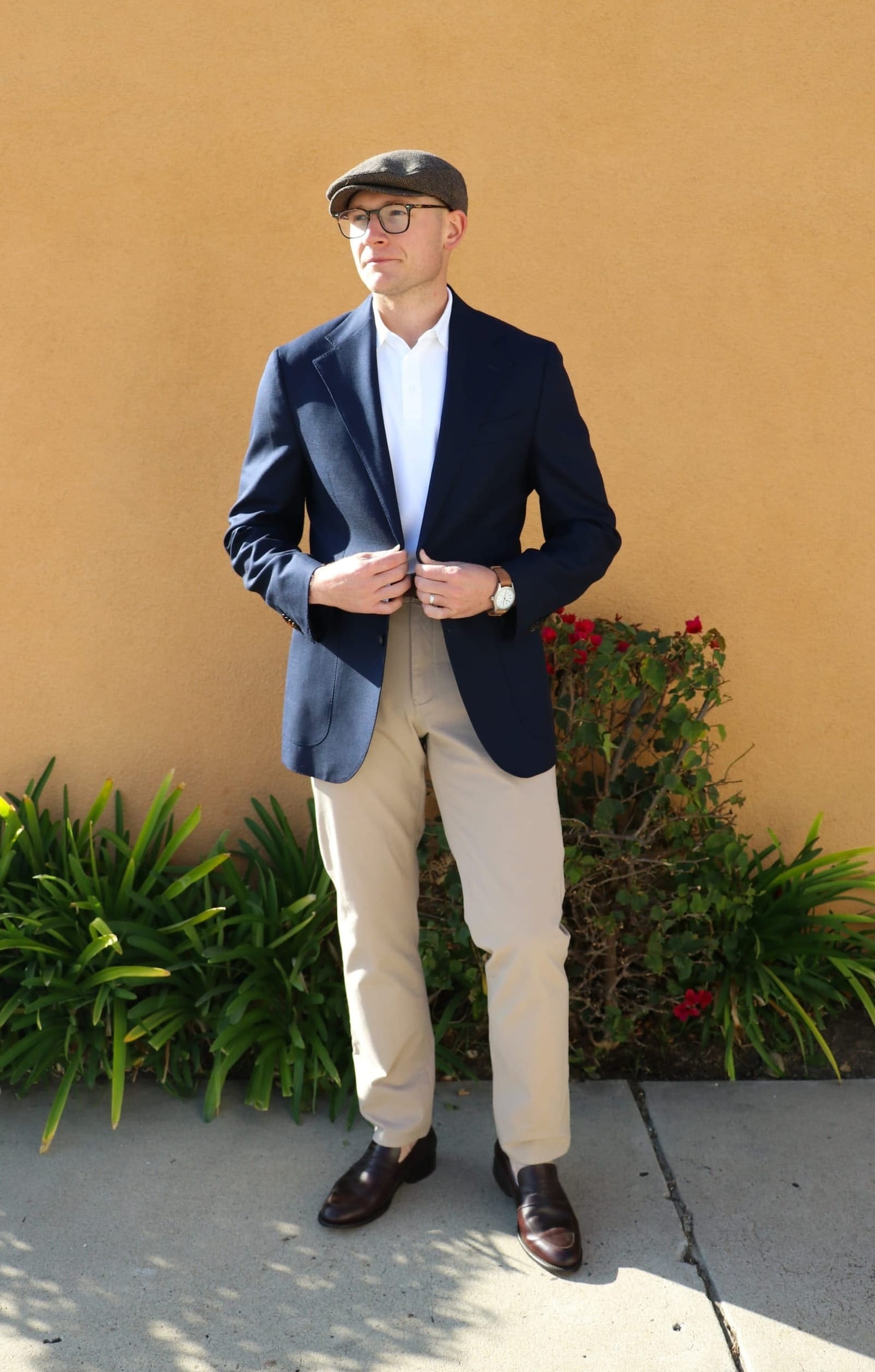
Let's dress up that outfit from before a bit.
Simply add a classic navy blazer, and voila! You're ready for the last-minute afternoon meeting with the boss. That's the power of a well-balanced navy blazer and sport coat. You can transform most looks by ensuring that the base outfit is easily complimented by adding a timeless outerwear piece.
Of course, it's vital to have the right polo shirts and khakis to begin with. So, when buying your wardrobe basics, ask yourself if the chinos, jeans, and shirts will work well with any blazers or sport coats you already own.
We want options in our closets, not just individual outfits. A look like this embodies that philosophy.
OUTFIT #5: DRESSY BUSINESS CASUAL OVERSHIRT
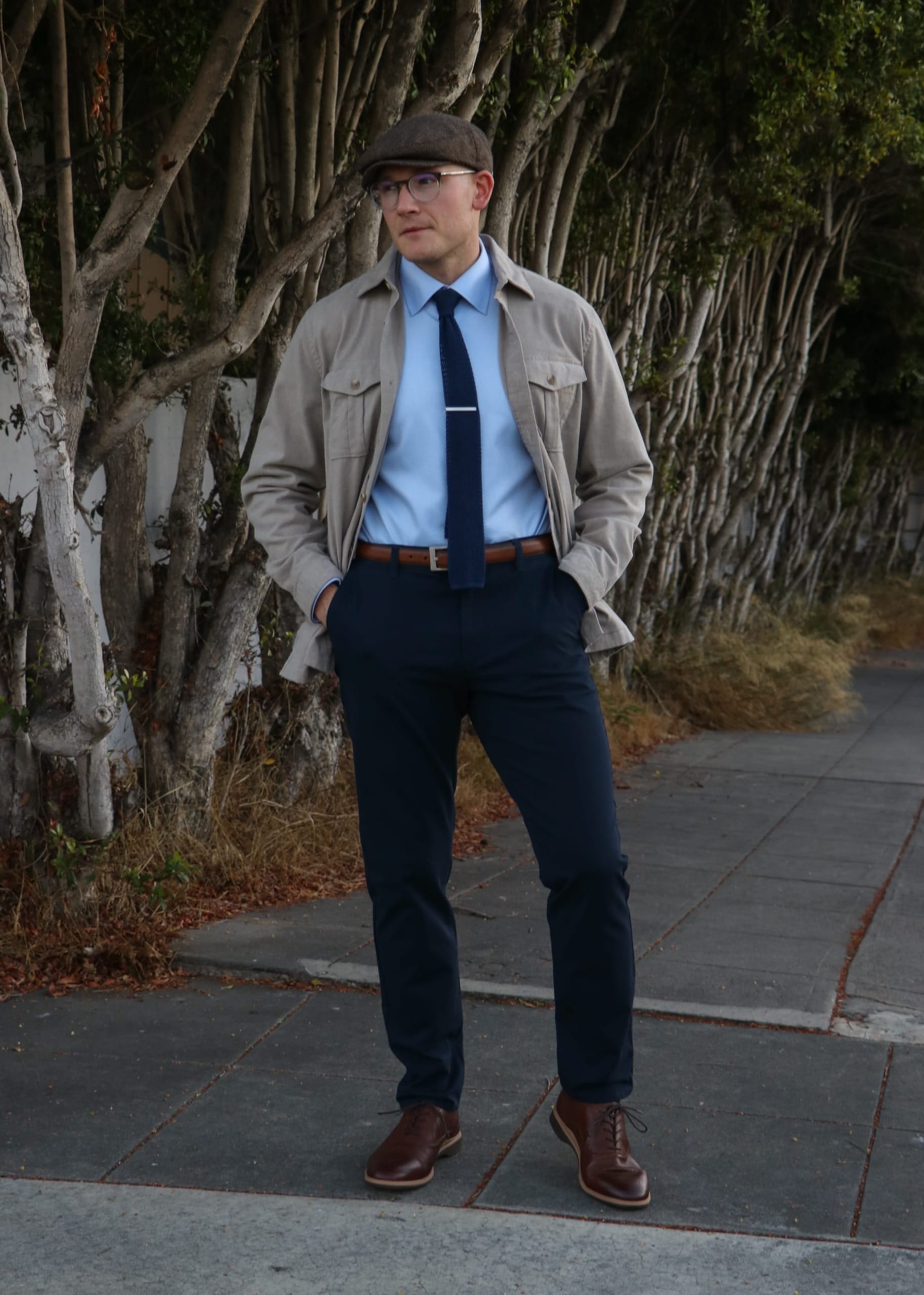
As mentioned, overshirts can undoubtedly take on a business casual look, but they must be able to be dressed up!
Fabric and color are crucial here. For instance, this moleskin overshirt has a soft yet sophisticated texture. Its color is tan, a classic neutral tone of brown that easily pairs well with shades of blue, green, and gray.
Not all overshirts are created equal, so use this example to model what to look for and how to style it effectively.
OUTFIT #6: BUSINESS CASUAL CARDIGAN SWEATER
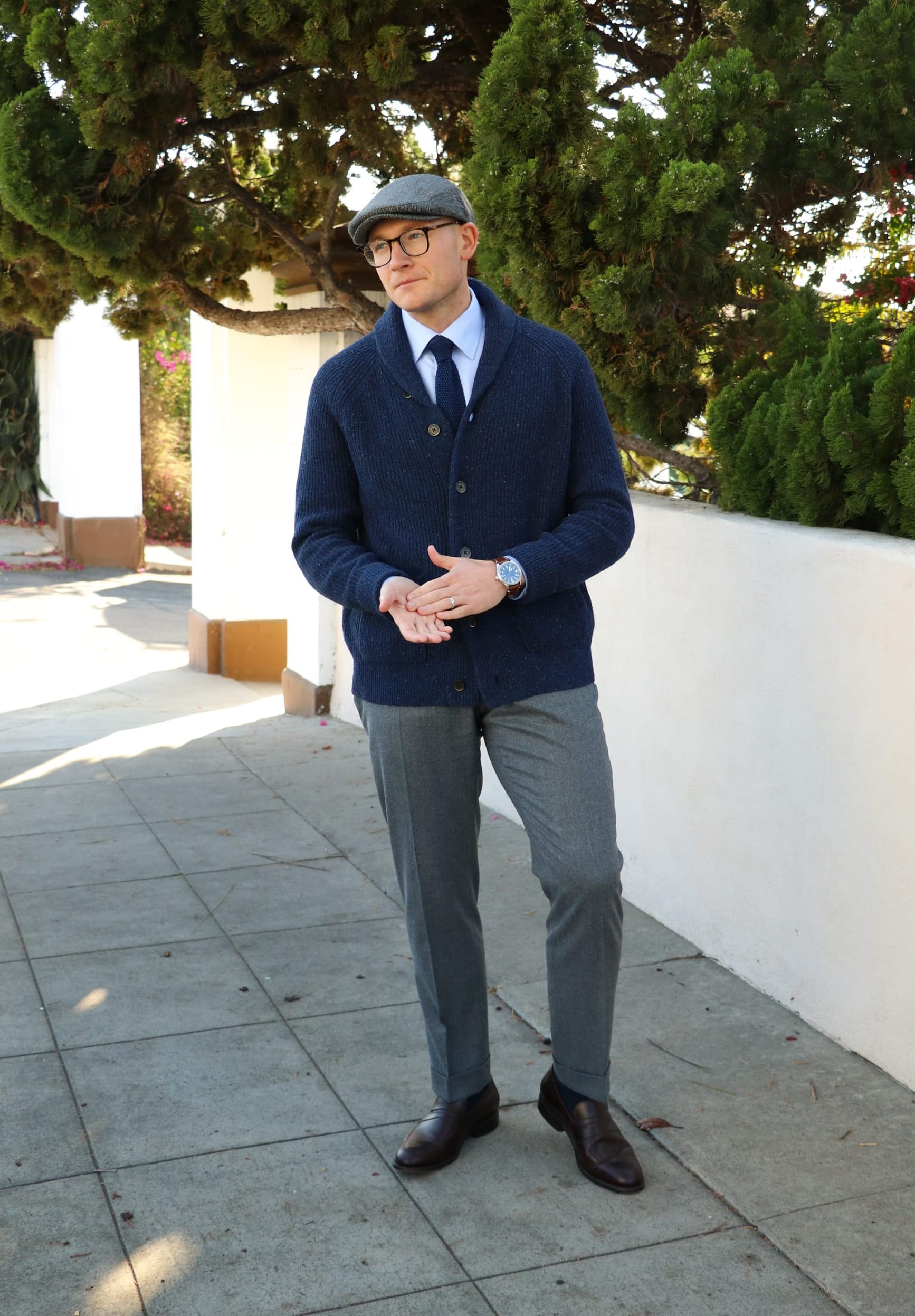
Much like an overshirt, a cardigan sweater can be a sort of "sweater blazer," provided you pick the right one.
Here is one such example: a classic chunky shawl cardigan sweater dressed up with a casual knit necktie and wool flannel dress pants. Warm, cozy, and handsome, this look will always look festive and dapper for the fall and winter.
OUTFIT #7: SPORT COAT, V-NECK SWEATER, JEANS, & BOOTS
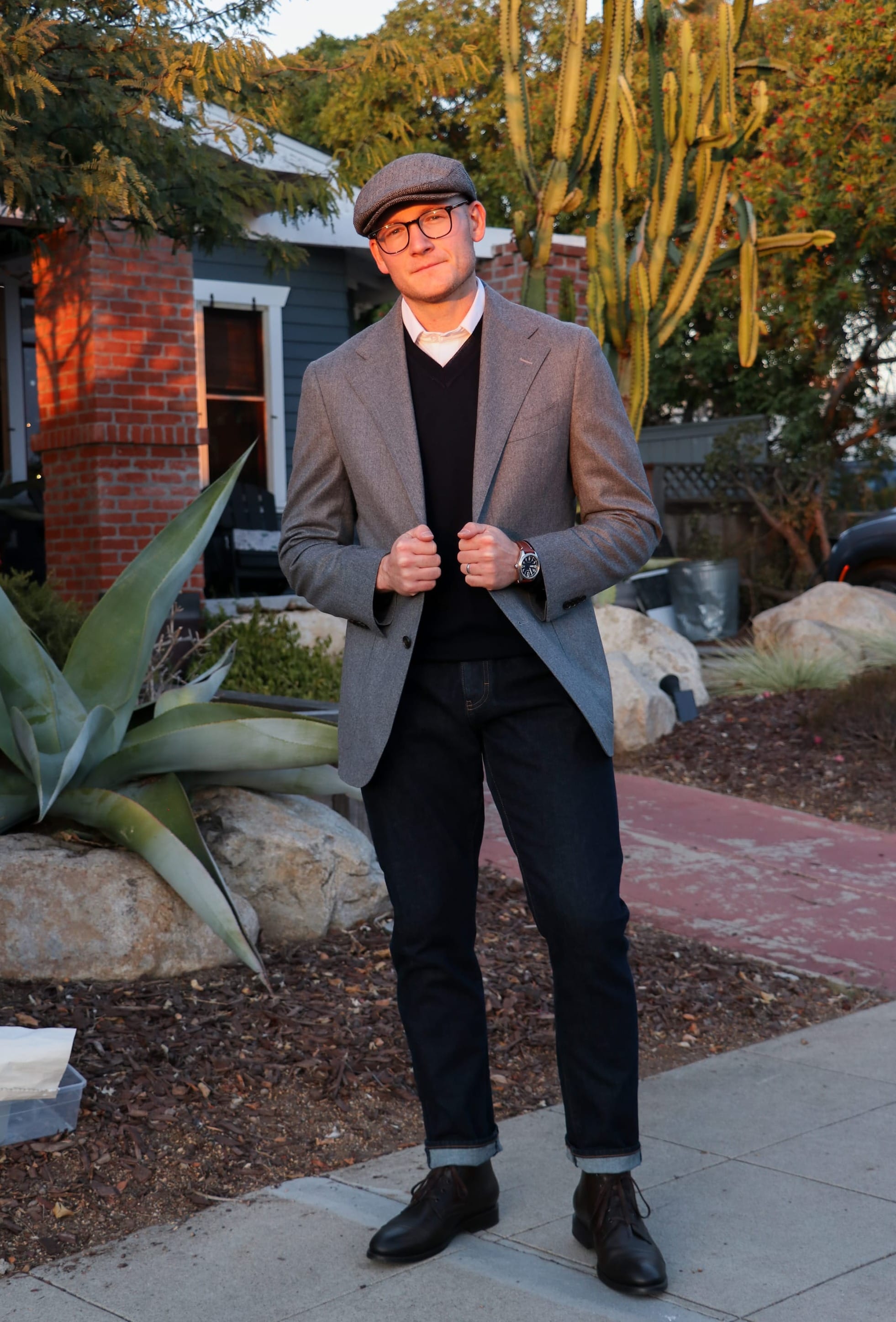
Dark-wash jeans look excellent when paired with neutral-colored sport coats that contain a fair bit of texture.
Take, for instance, this gray flannel sport coat. It provides texture and warmth while pairing exceedingly well with the navy v-neck sweater layered on top of a white dress collar polo (or dress shirt).
If you opt for these warmer fabrics, it's likely to be brisk outside, so wear dressier lace-up boots in a deep brown tone. This is a great example of incorporating dark-wash jeans into your business casual wardrobe (provided your place of work allows them).
OUTFIT #8: SPORT COAT, DRESS SHIRT, DRESS PANTS, & OXFORDS
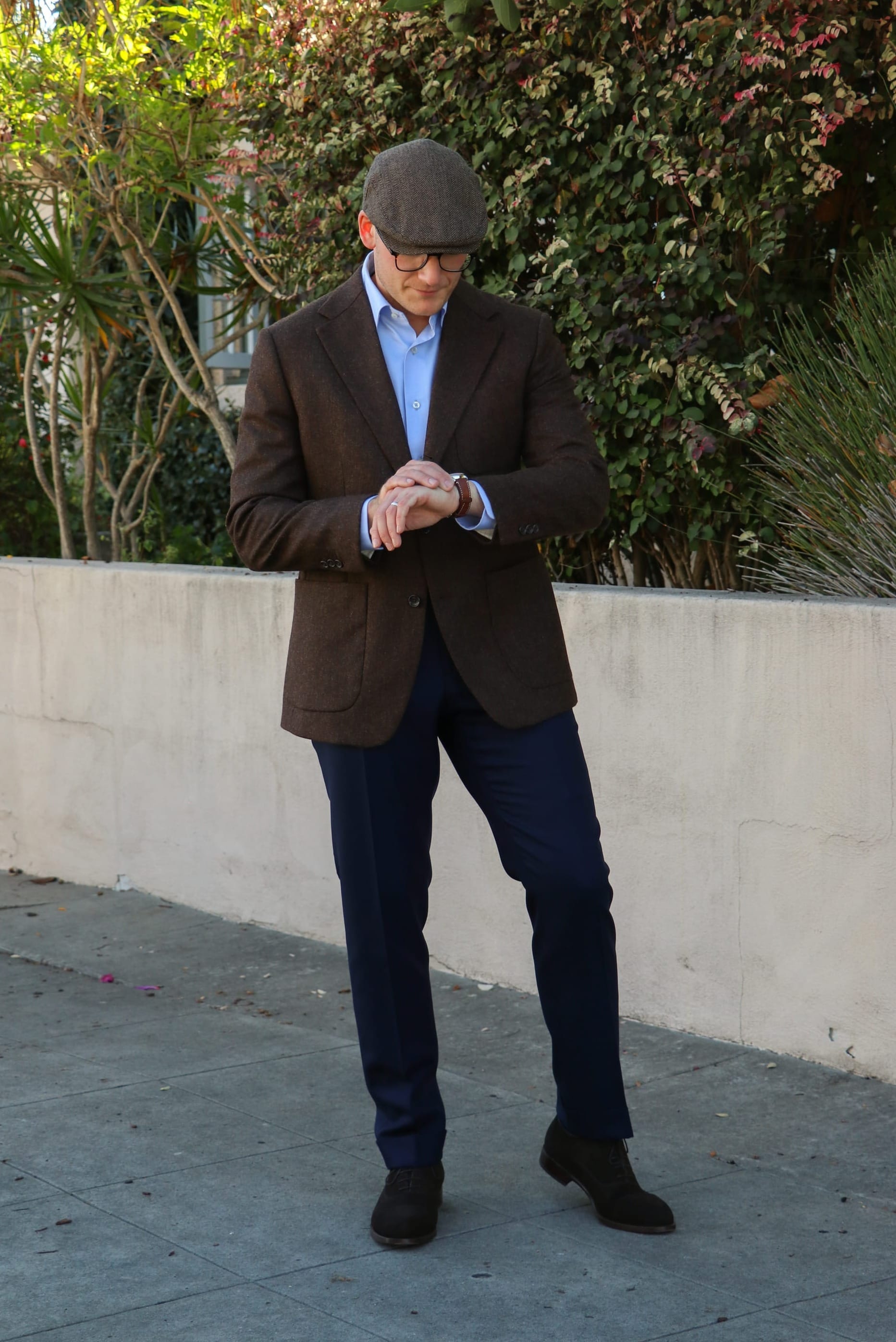
Now, we'll explore a more classic way of wearing business casual clothing. You're probably already familiar with this look: a classic sport coat in a neutral color like brown, dress pants, a dress shirt, and Oxford dress shoes.
Notice the rich texture in the suede Oxfords and how it compliments the lighter brown tweed sport coat. This is one such example of using texture to create harmony in your looks, and I think that it's a great way to remain both casual and dressy at the same time.
If tweed isn't for you, no worries—a brown sport coat in textured wool, flannel, cotton, or linen can often look just as nice!
OUTFIT #9: "DRESSY" BUSINESS CASUAL
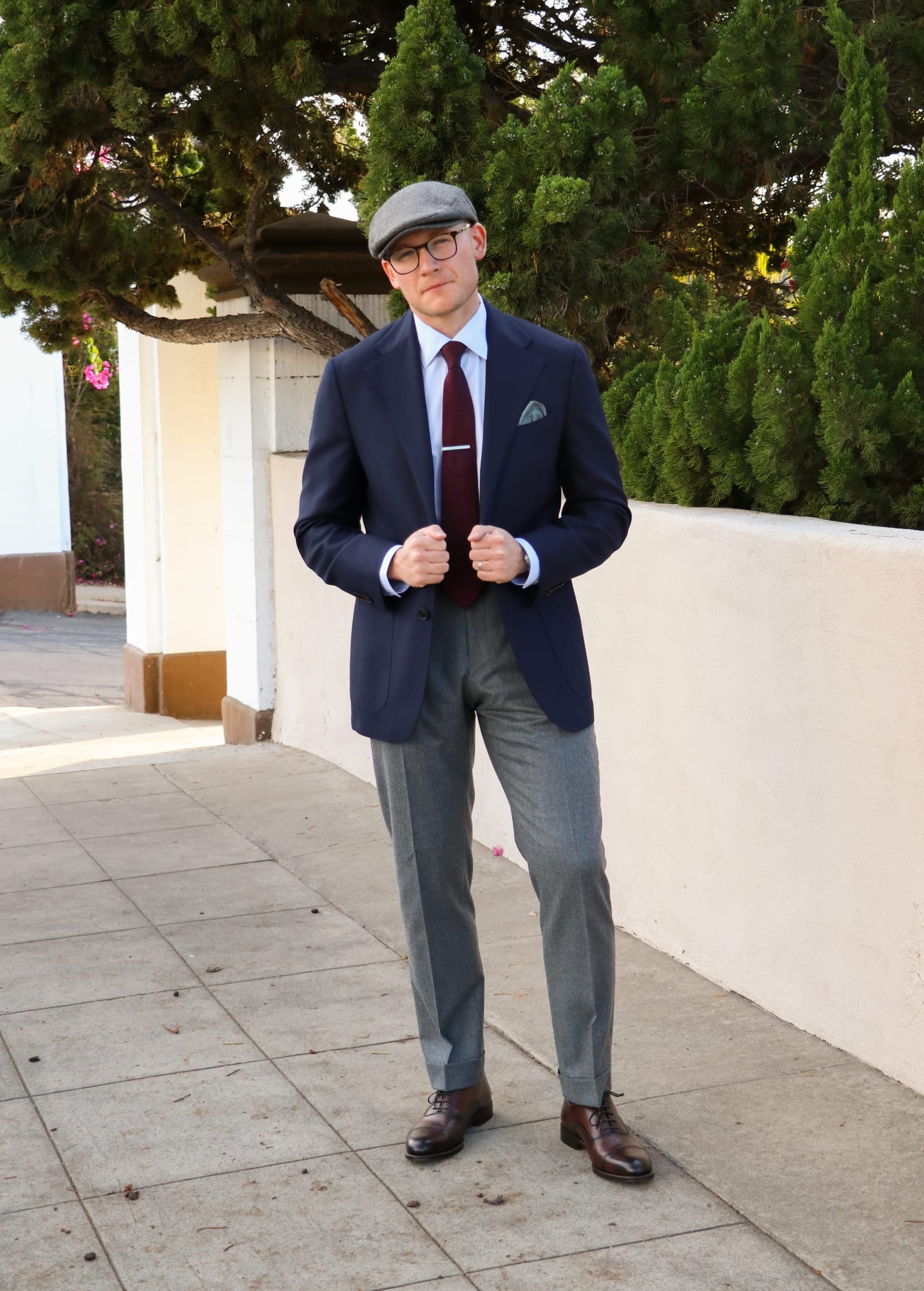
Here is an example of a more formal business casual outfit for men.
Once again, you're probably used to seeing a look like this in movies, television, magazines, or online. This classic menswear "uniform" will always remain stylish for dressier office occasions.
The navy blazer is in a beautiful wool hopsack, providing a subtle yet effective texture. It is paired over clean wool flannel dress pants, an ice blue Oxford-cloth dress shirt, and a textured burgundy grenadine necktie, harmonizing well with the other textures throughout the look.
Of course, brown leather Oxford dress shoes are a logical choice, but feel free to exchange them for leather loafers or suede dress shoes. You have options with a look like this, so find what suits your style and comfort.
OUTFIT #10: WINTER BUSINESS CASUAL PEACOAT
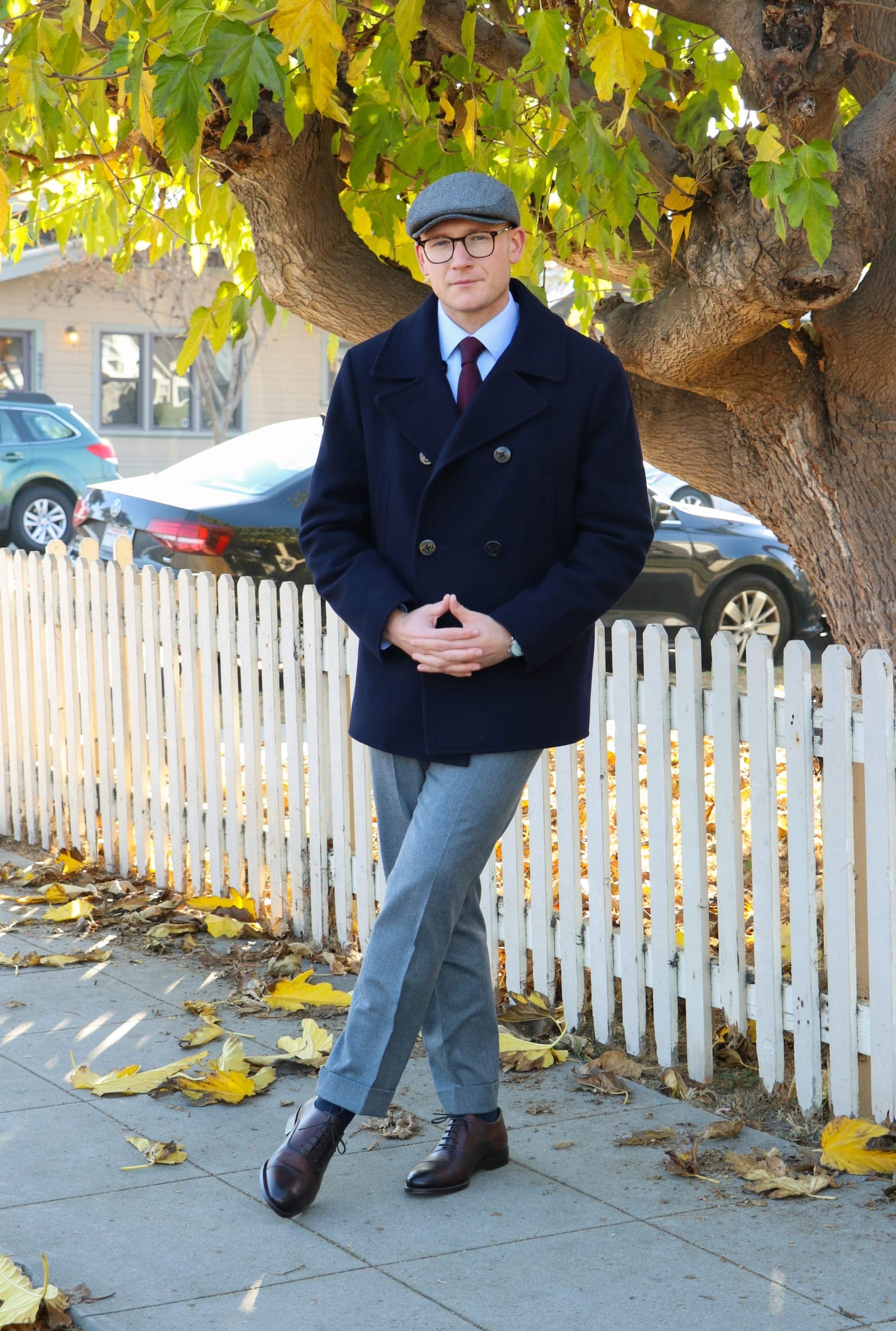
Remember what I said about the peacoat functioning similarly to a navy blazer? Well, here is the proof. I have the same outfit from before, just with a wool navy peacoat exchanged for the blazer. If you need or want extra warmth, look no further than adopting something like this.
Common Mistakes to Avoid
MIND THE FIT
Choose clothes that compliment your body type, aren't too tight, and feel comfortable because, regardless of how you think of yourself in the clothes you wear, sporting ill-fitting garments does nothing to improve your appearance (or build confidence). Trust me.
I agree that how we feel about ourselves is important—there's no doubt about that. But, as a professional in today's society, a gentleman must understand that what he wears is not solely for his own enjoyment.
What we wear is also intended for the viewing pleasure of those around us. In many cases, how others perceive us can significantly impact our opportunities as professionals trying to build relationships with others.
TRY NOT TO OVERDRESS
After reading this guide, it should be apparent that business casual offers a generous array of options for all men, especially in the modern era. However, do not take certain liberties and over- or under-dress.
Of course, overdressing is always better than underdressing, but recognize that wearing a full suit and tie is not business casual. While certain events in your life (perhaps even work-related) require a suit, try to use your best judgment before overdressing everyone else.
I get it; sometimes, you just want to dress for the "job you want" rather than the job you have. However, ensure you are well-established in your work position and know when overdressing might be appropriate. I'll leave the rest to you.
NEVER UNDERDRESS
On the flip side, never underdress! This is the worst thing you could ever do in your place of work. Not only is it non-compliant, but it is often viewed as disrespectful and can communicate to those around you (especially your boss) that you're on your own program and not a team player!
Depending on your employer, this could be an effective way to stay stagnant or even get fired.
Dressing well within the confines of your office dress code can be the first step to making a good impression on your managers.
Conclusion
In closing, nailing your business casual style traditionally includes a lean collection of neutral-colored basics that are easily interchangeable.
Because the business casual dress code has proven to be a widening landscape, ensure that you have a solid collection of appropriate business casual shoes, business casual pants, and business casual shirts, all of which fit within the parameters of what I have discussed and shown to you throughout this guide to business casual style.
Whether your workplace dress code prioritizes formal business wear or a more laid-back and contemporary style, I hope this guide to business casual for men has been helpful.
By following these guidelines, you can maximize casual styles and develop your own personal style to ensure that you're putting your best foot forward as a professional in the workplace.
